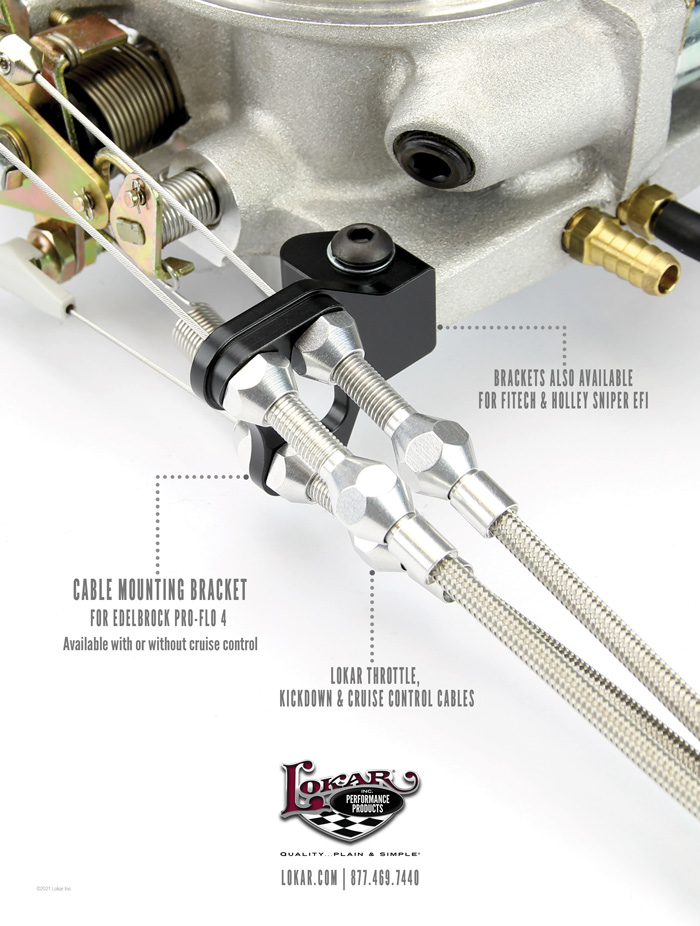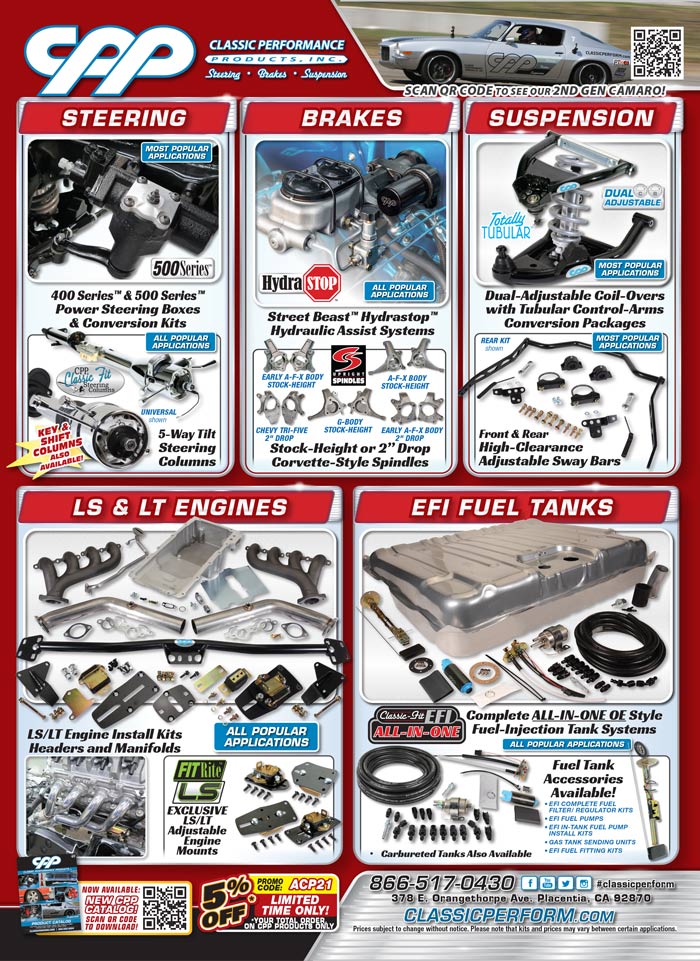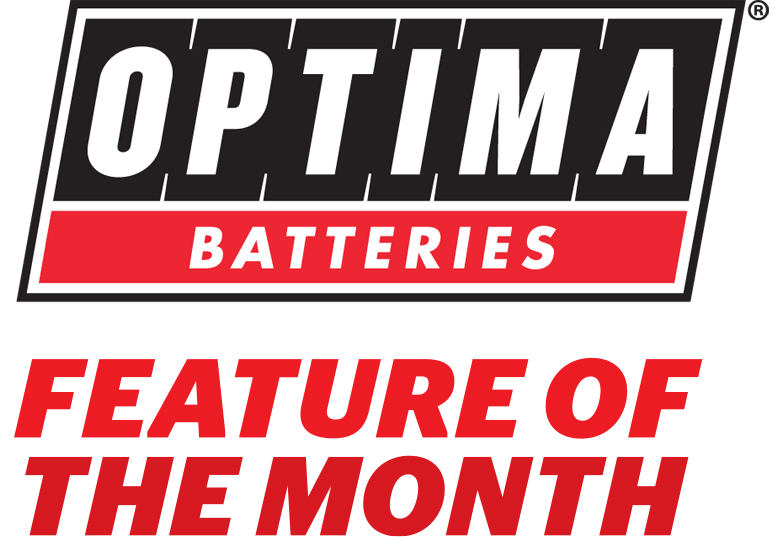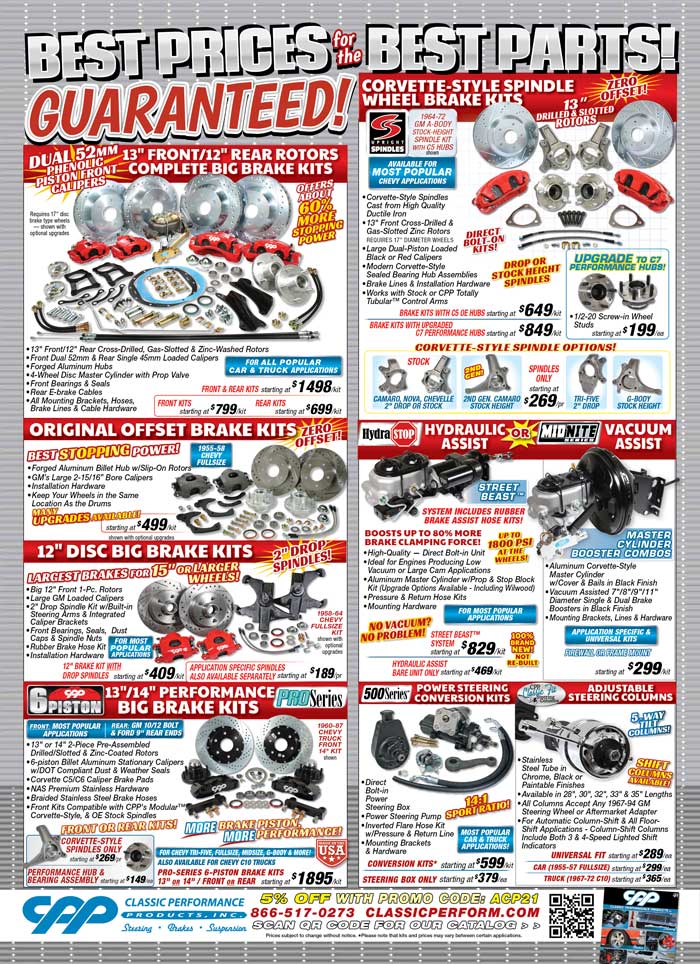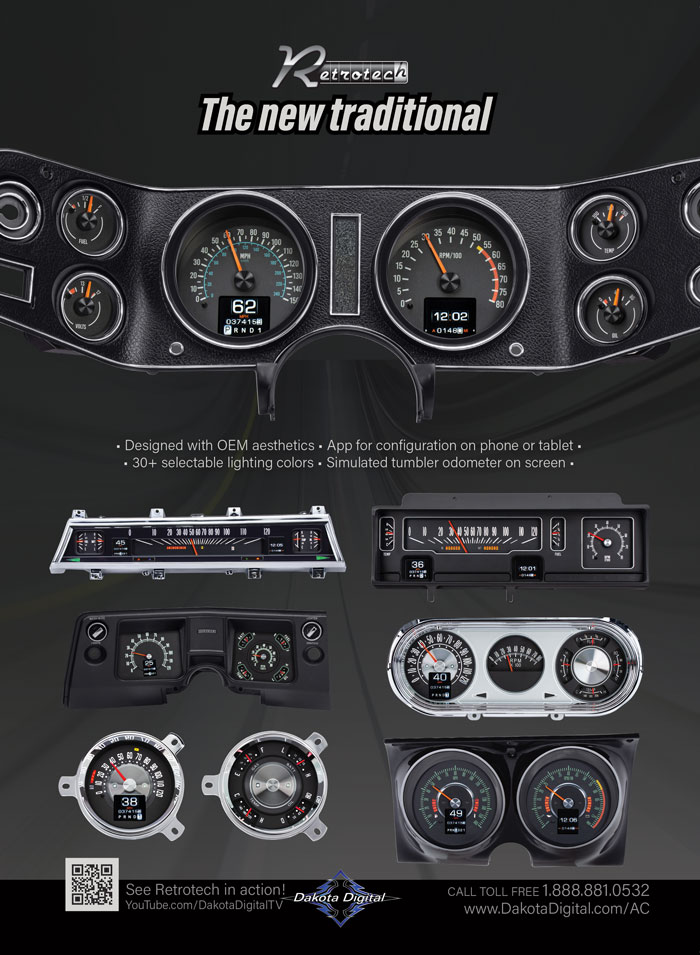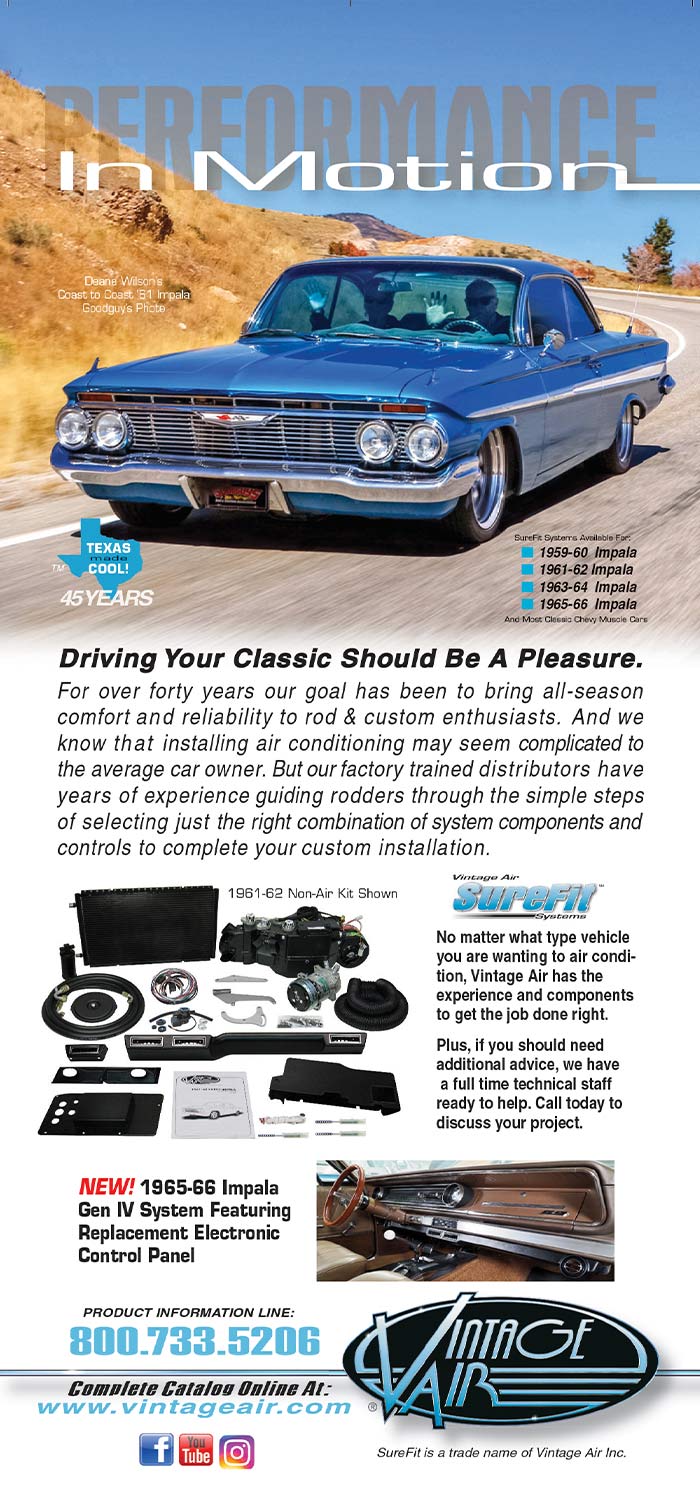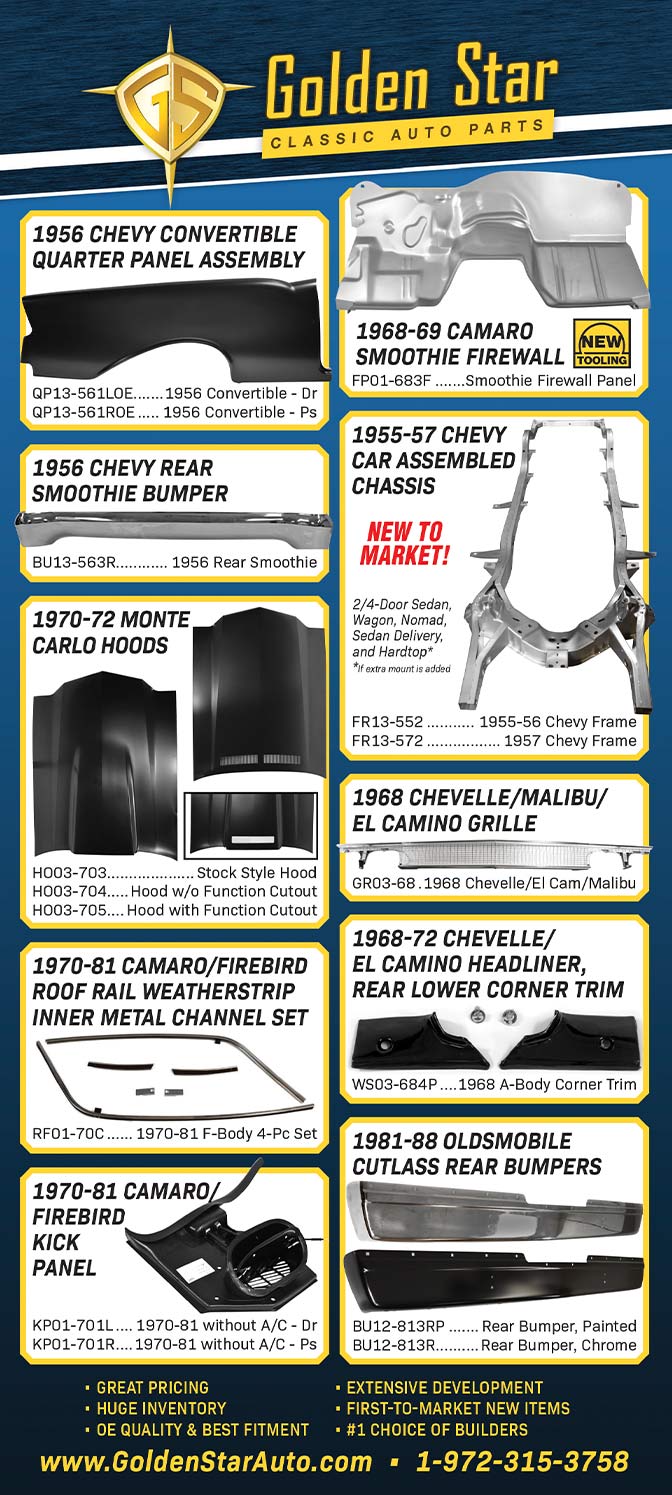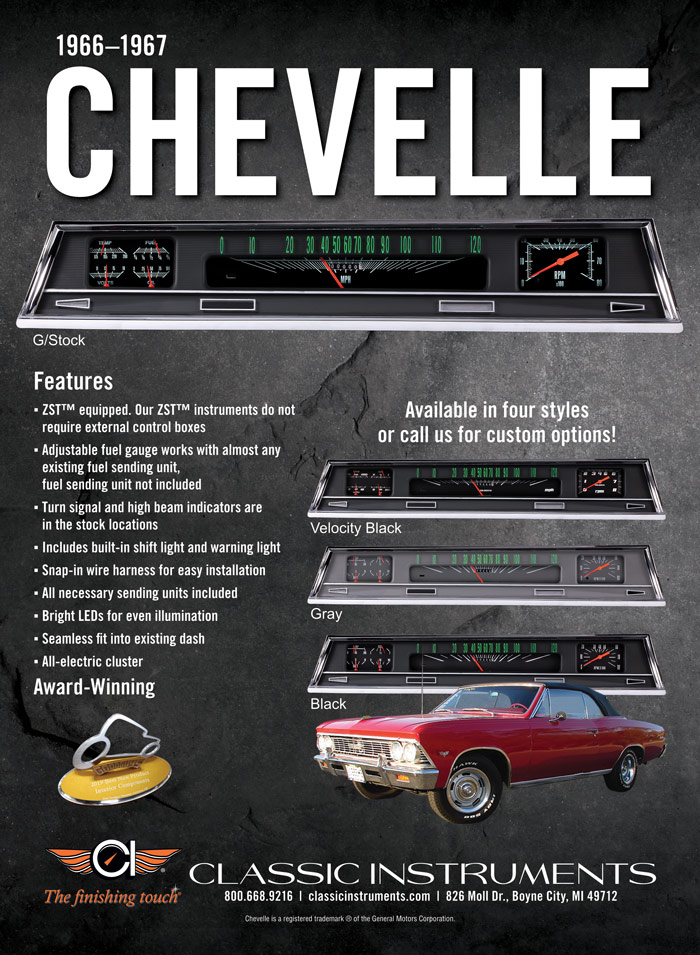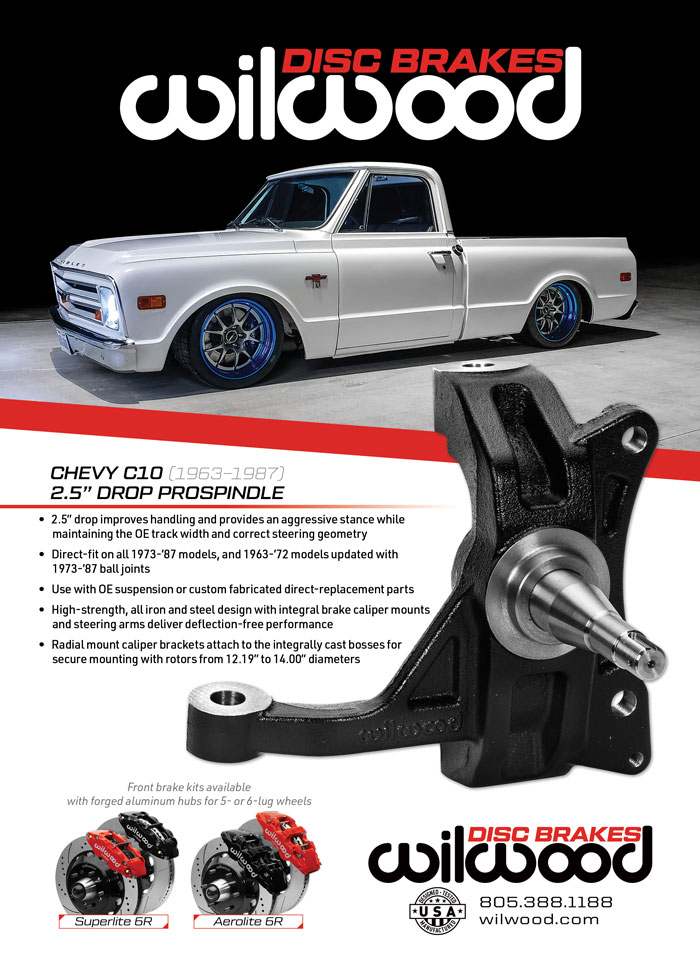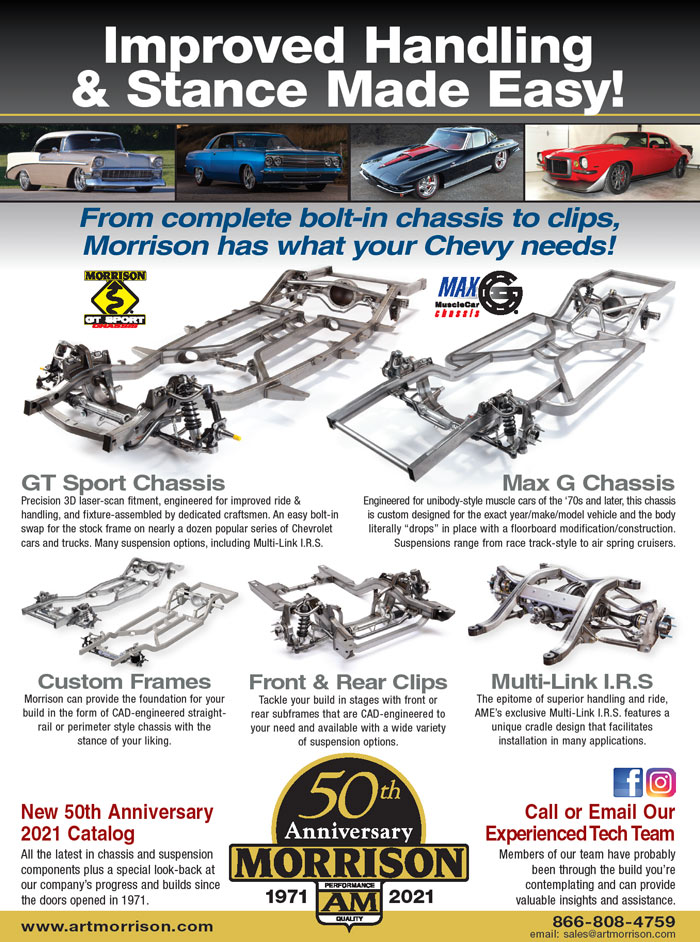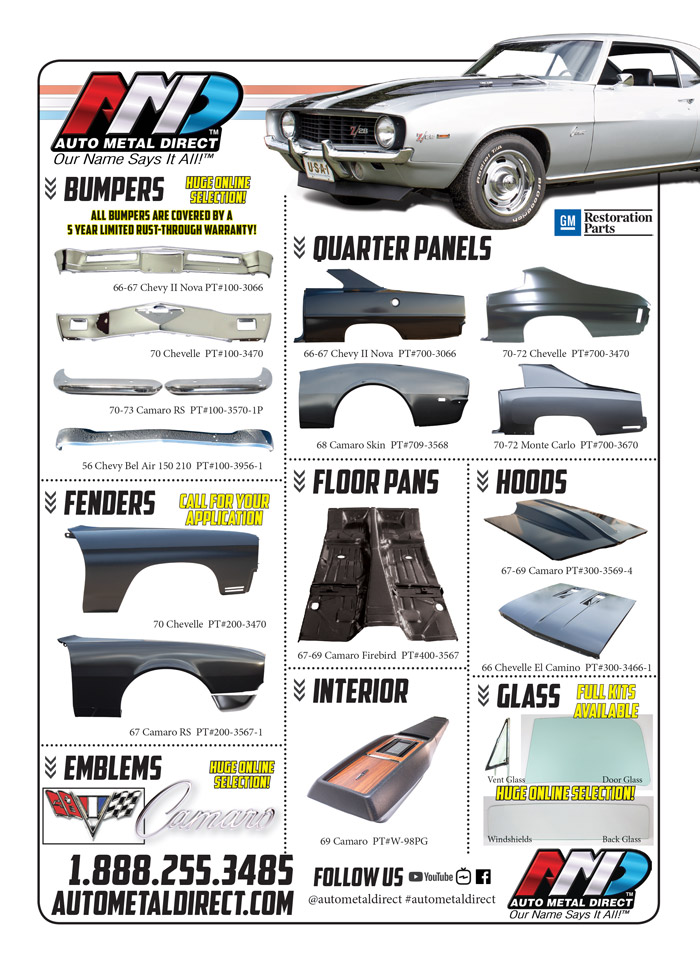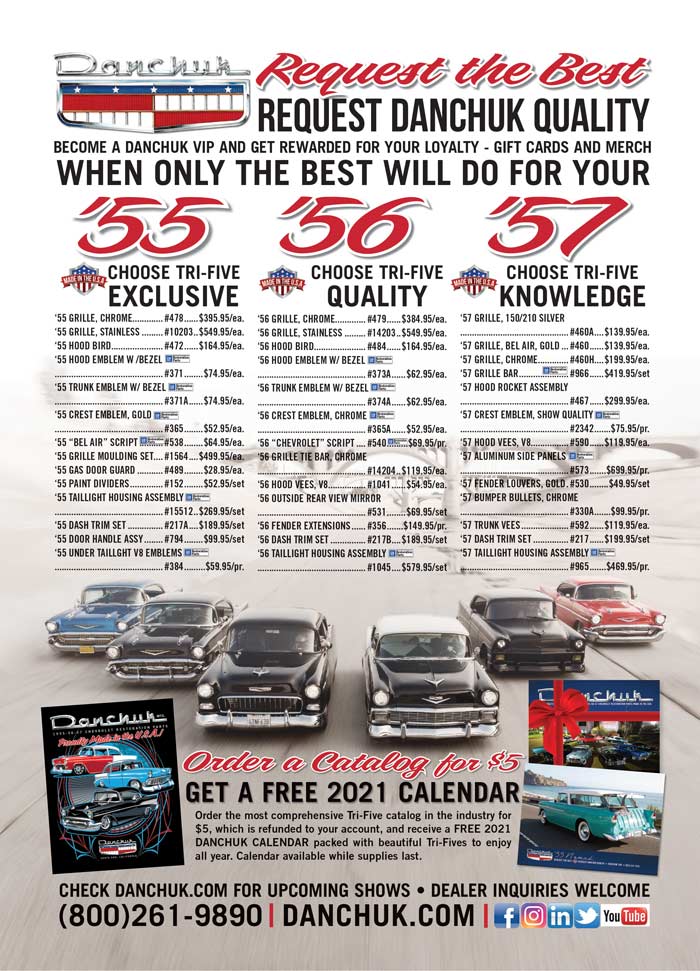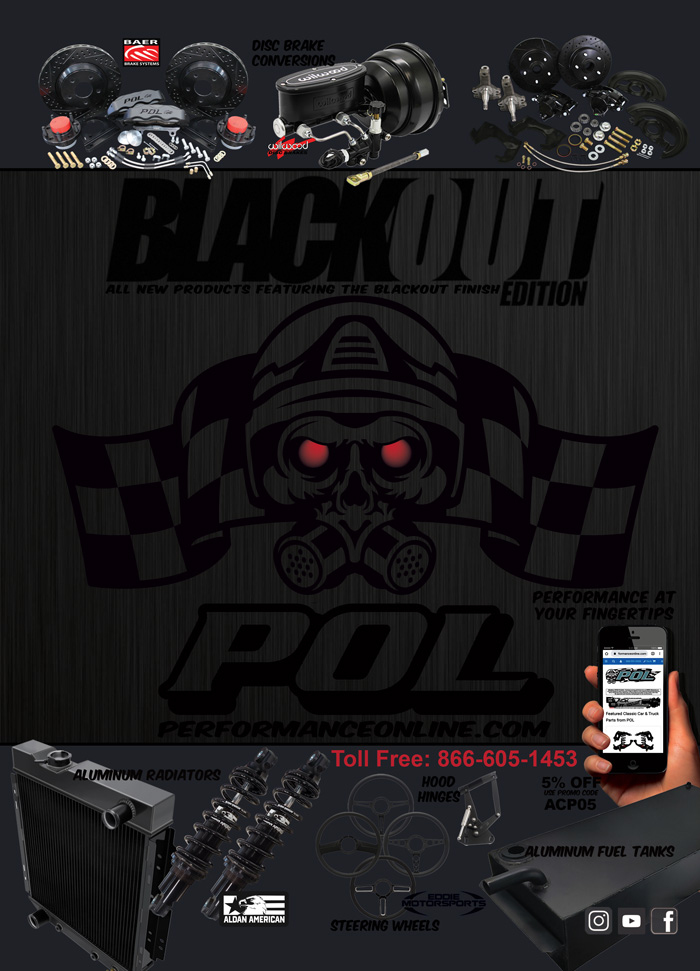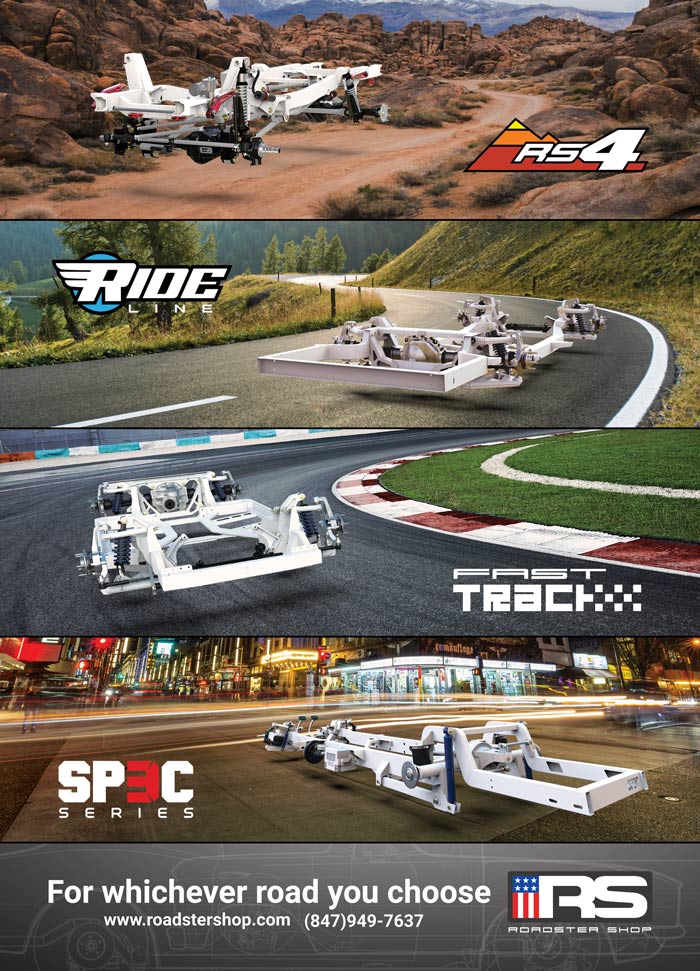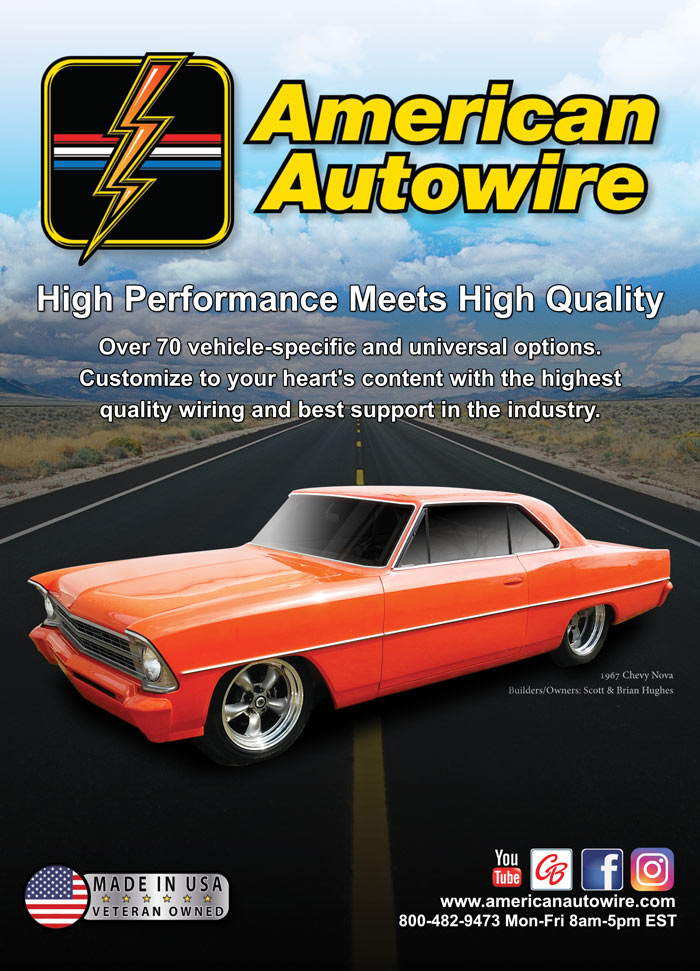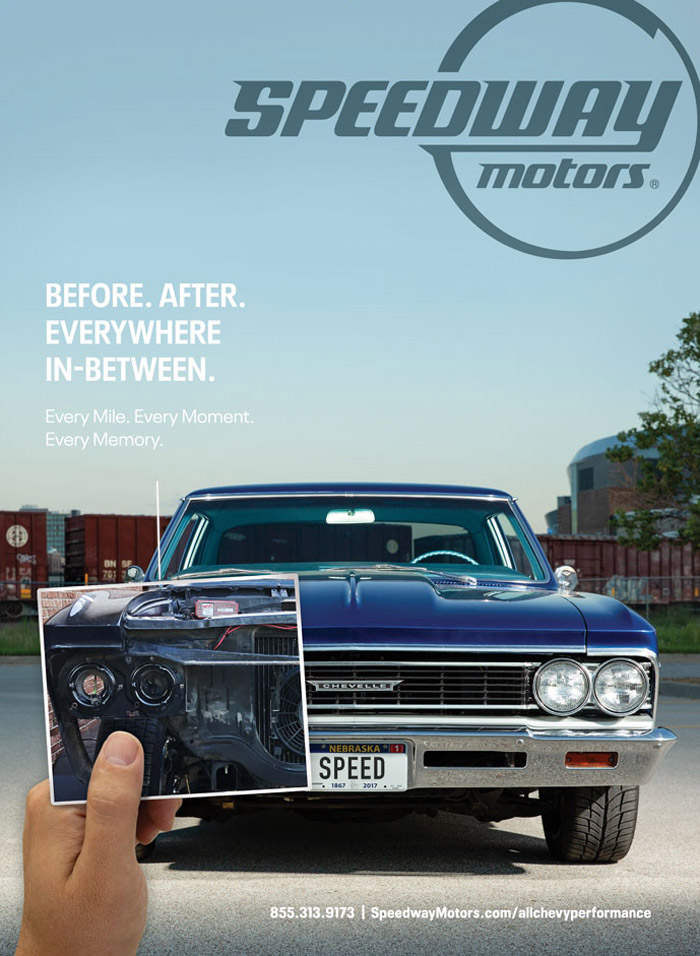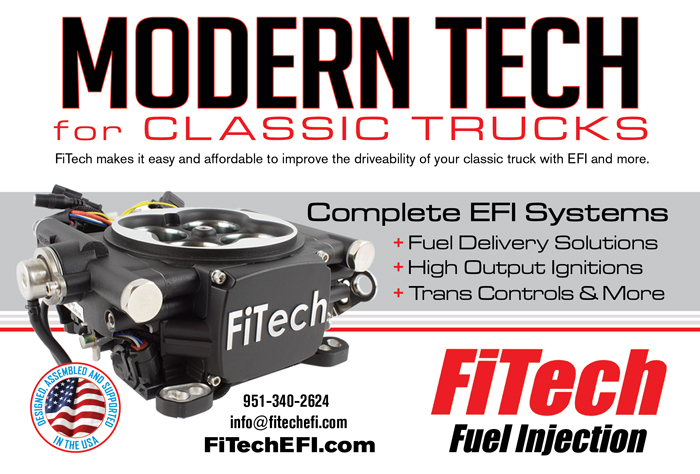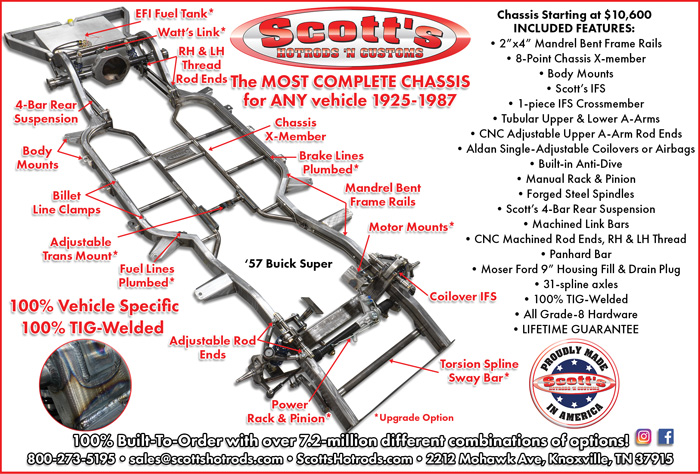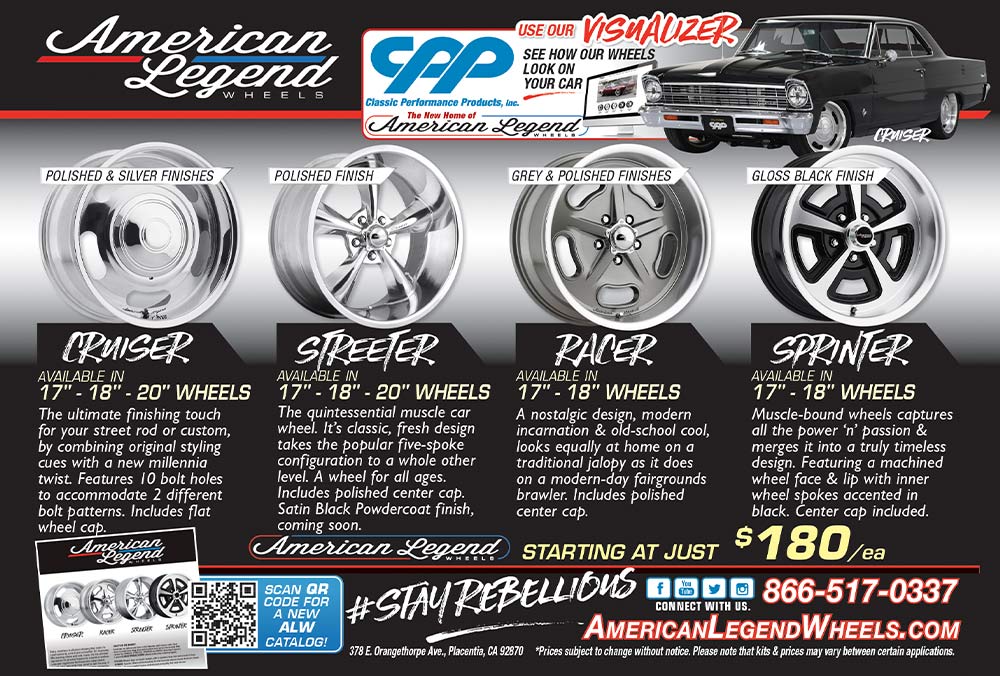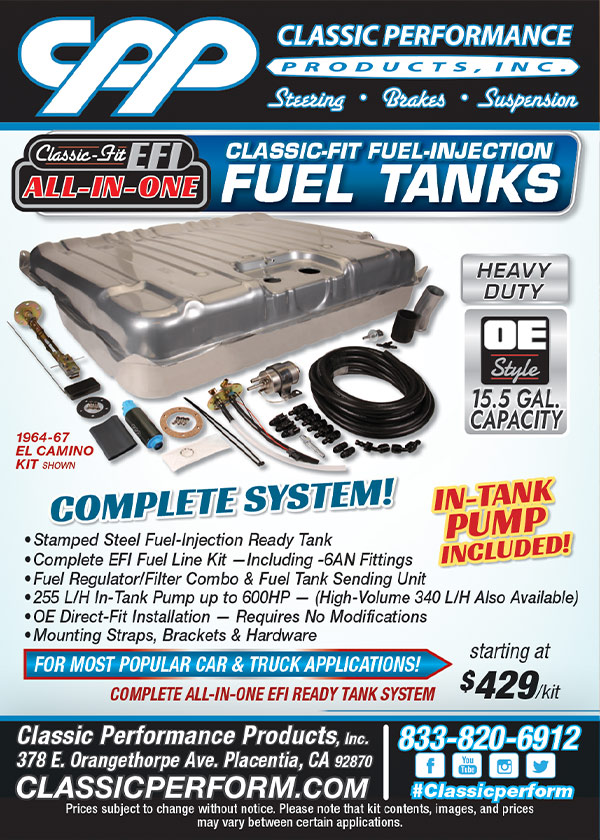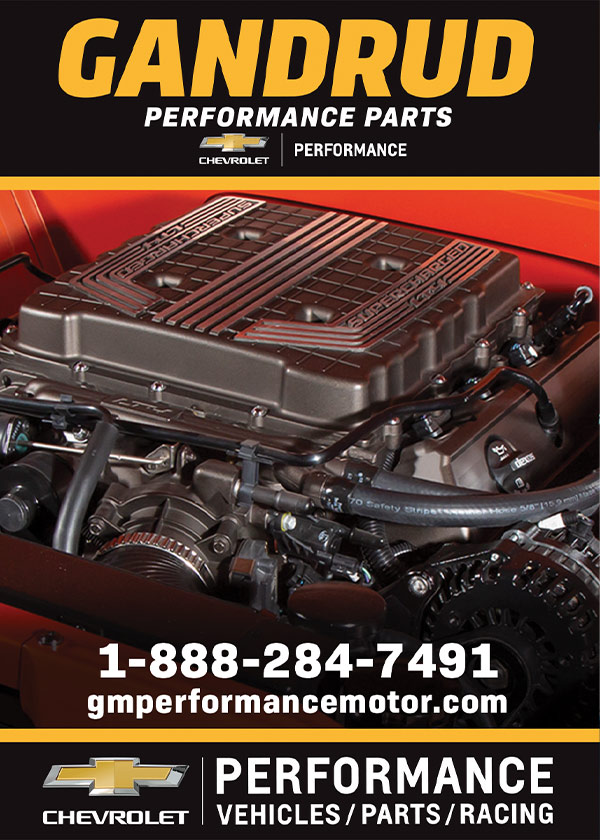

 TOC
TOC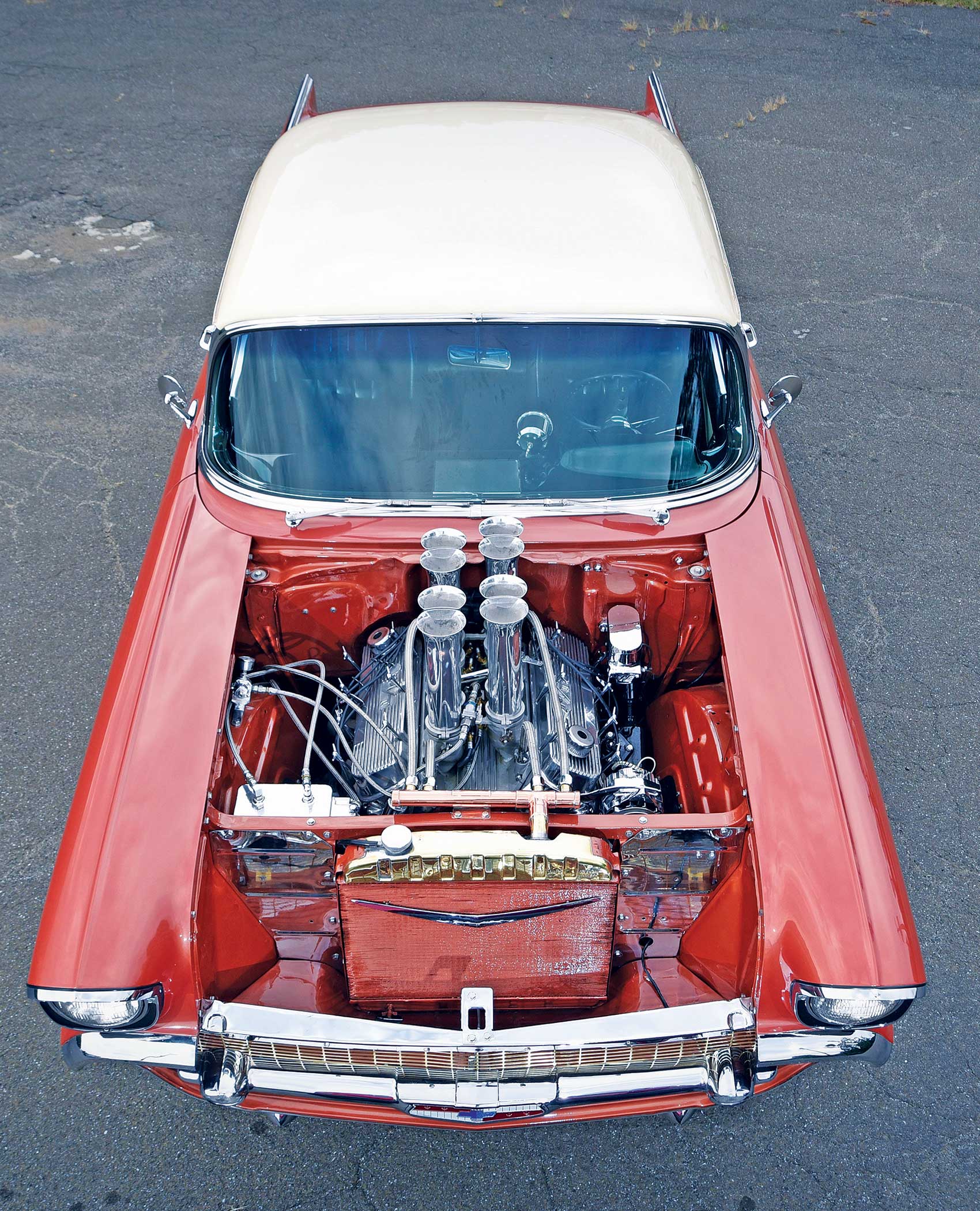

ROB MUNOZ
Rodney Bauman, Tommy Lee Byrd, Ron Ceridono, Michael Christensen, Ron Covell, Grant Cox,Dominic Damato, John Drummond, Eric Geisert, Joe Greeves, John Jackson, Barry Kluczyk, Scotty Lachenauer, Ryan Manson, Josh Mishler, Todd Ryden, Chris Shelton, Tim Sutton, Chuck Vranas – Writers and Photographers
Mark Dewey – National Sales Manager
Janeen Kirby – Sales Representative
Patrick Walsh – Sales Representative
Travis Weeks – Sales Representative
AllChevyPerformance.com
ClassicTruckPerformance.com
ModernRodding.com
InTheGarageMedia.com
subscriptions@inthegaragemedia.com
ads@inthegaragemedia.com
info@inthegaragemedia.com

The All Chevy Performance trademark is a registered trademark of In The Garage Media.
1350 E. Chapman Ave. #6650, Fullerton, CA 92834-6550.



 FIRING UP
FIRING UP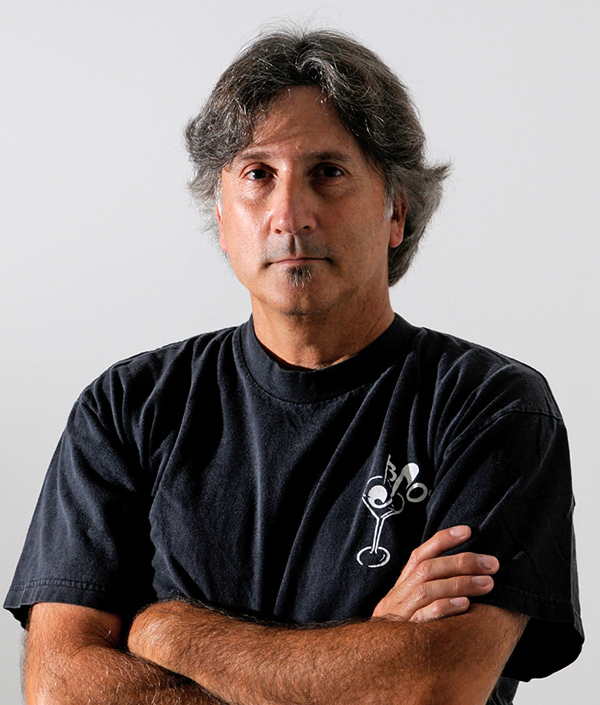
Cruisin’
Along

Cruisin’
Along
 BY NICK LICATA
BY NICK LICATAooking back at 2020, I have to say, hands down, it was the worst year I’ve ever experienced. The reasons are obvious and many, so I’ll skip putting together a list. If there was anything positive to come out of living during a global pandemic, it did allow for some additional time spent at home with my family, which hasn’t been a bad thing—although sharing a small converted bedroom office with my wife is a different story. I’ll just leave that one alone for now.
After all we’ve gone through this past year, there’s no doubt we’ve been spit out of 2020 stronger and more resilient than expected. From a personal, and an industry, standpoint, if we can pull through the last 12 months, we can pretty much handle anything.
Although we were able to attend some events last year, they were few and far between. And with many of the weekend cars and coffee–style gatherings still taking place, those lowkey events offered us hot rod and muscle car enthusiasts the opportunity to get out with our rides. Although waking up early on a Saturday or Sunday to make these cruises isn’t my normal, by any means, it was fun to spend a little time with like-minded car enthusiasts for a couple hours. It’s also important we keep supporting these cruises, as the organizers typically spend a lot of time scoping out retail parking lots and working with the land owners and tenants to approve a place to take our rides and hang out. And remember to do your part in buying their coffee, T-shirts, hats, or whatever else they are pushing, as most of these people do it out of passion—not money. They’re also the ones who take the heat when you decide to do a burnout at said parking lot.
 Parts Bin
Parts Bin BY Nick Licata
BY Nick Licata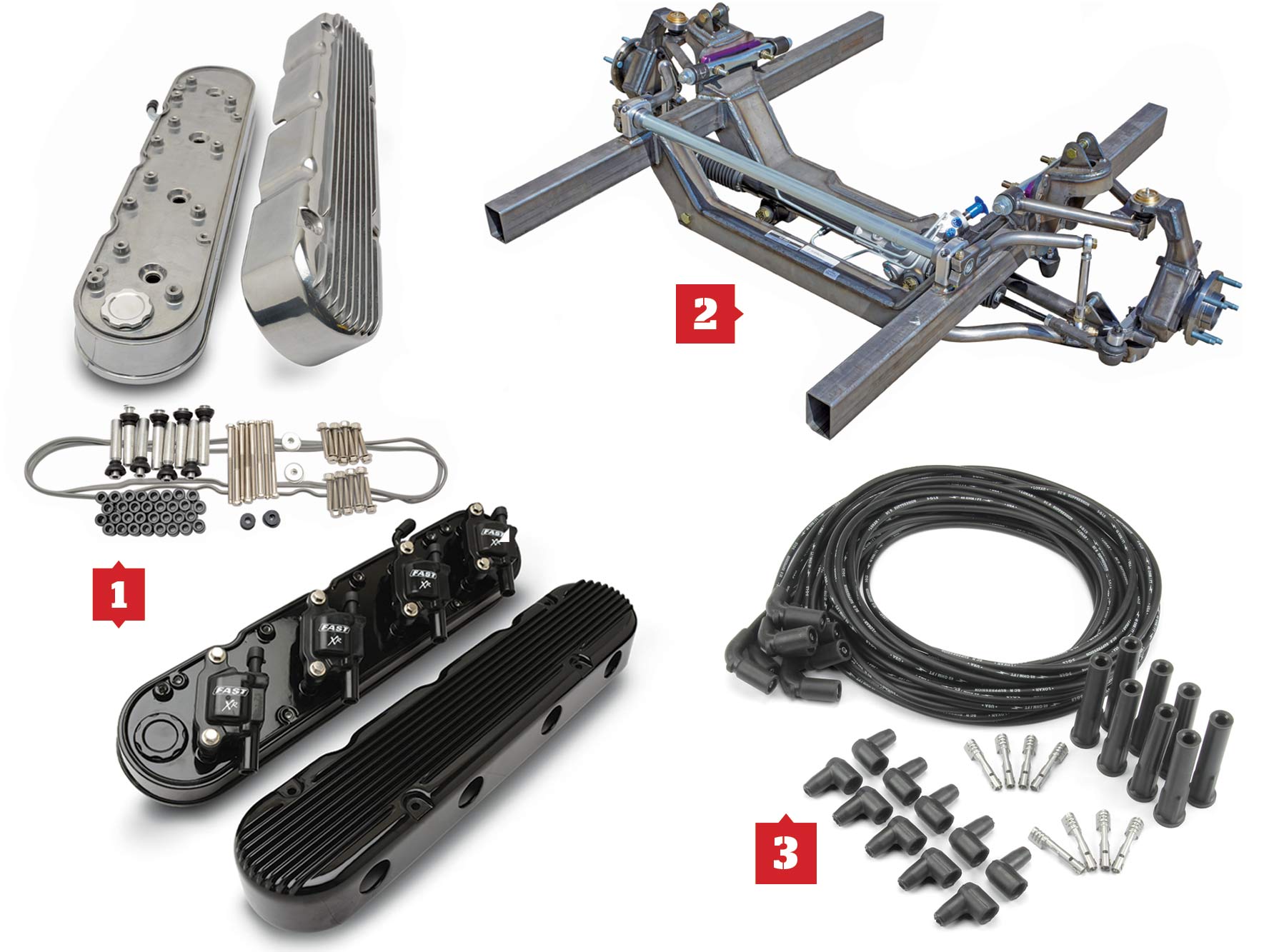
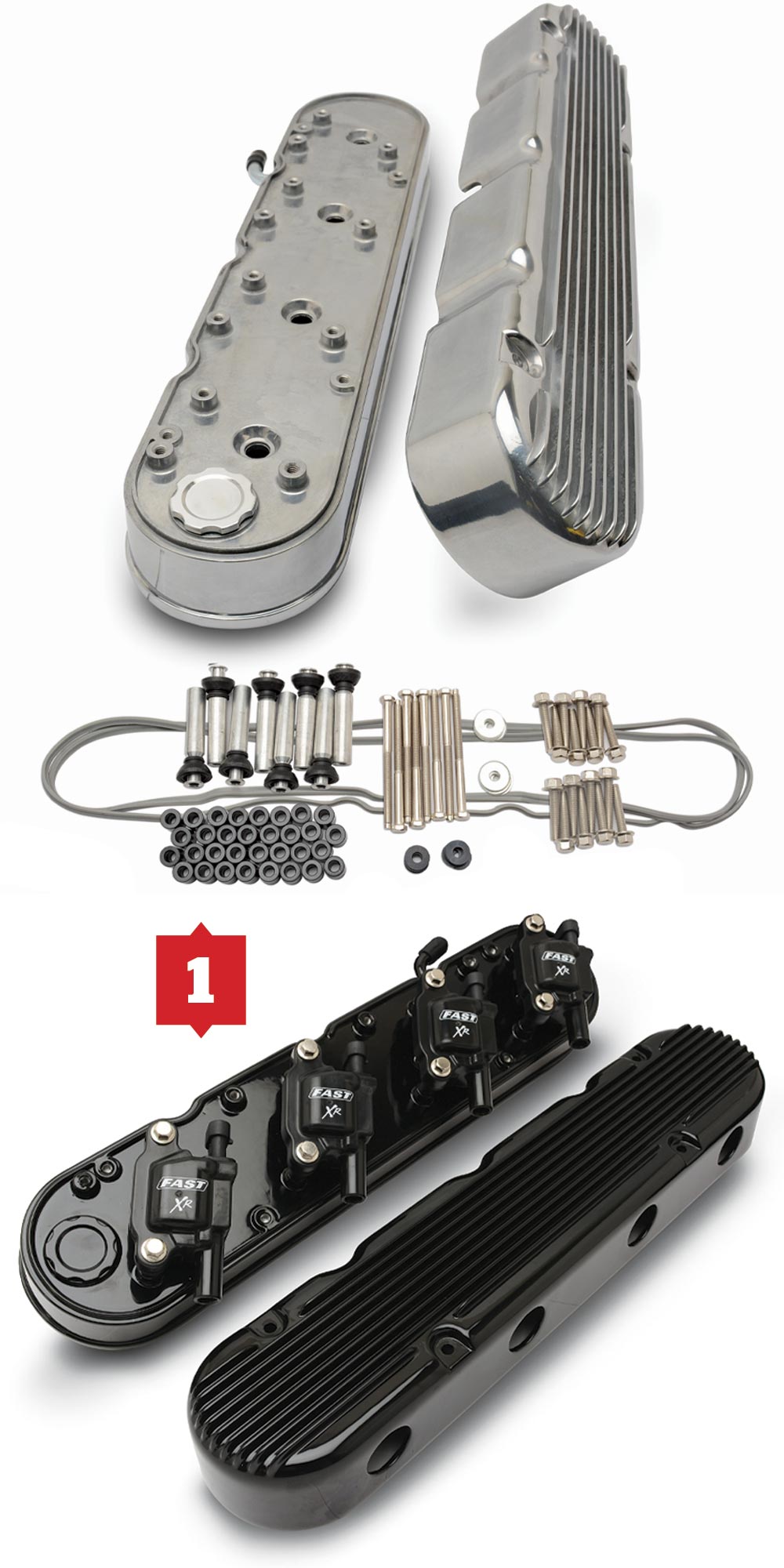
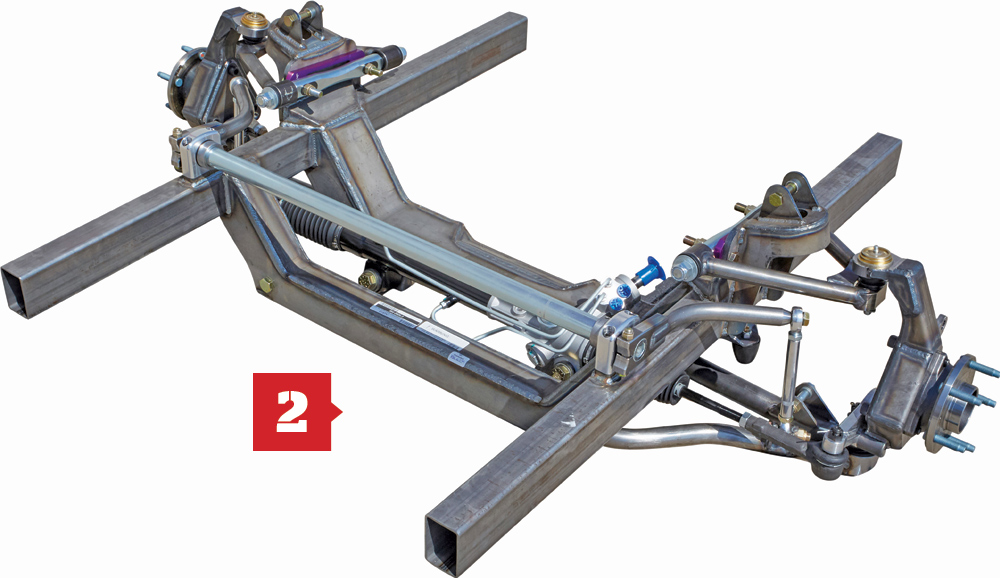
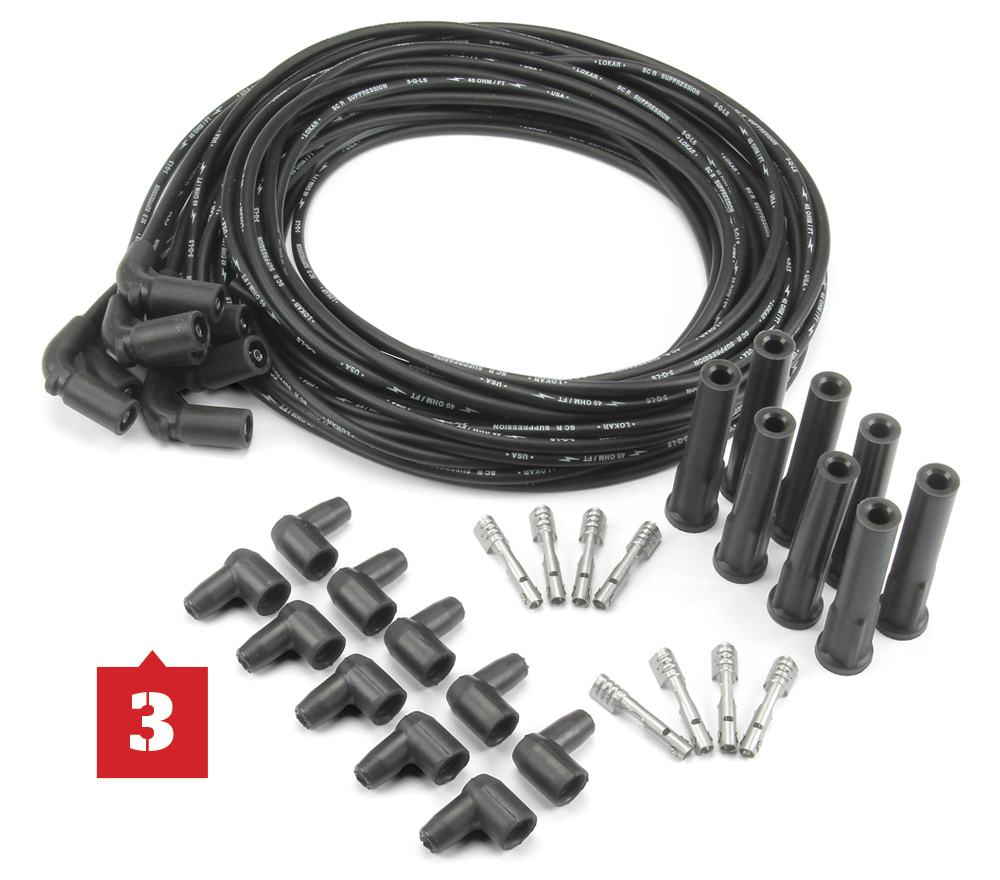
EDDIE MOTORSPORTS
(888) 813-1293
eddiemotorsports.com
SPEEDWAY MOTORS
(800) 979-0122
speedwaymotors.com
LOKAR PERFORMANCE PRODUCTS
(865) 824-9767
lokar.com
 CHEVY CONCEPTS
CHEVY CONCEPTS
Owner: Joe Masquelier
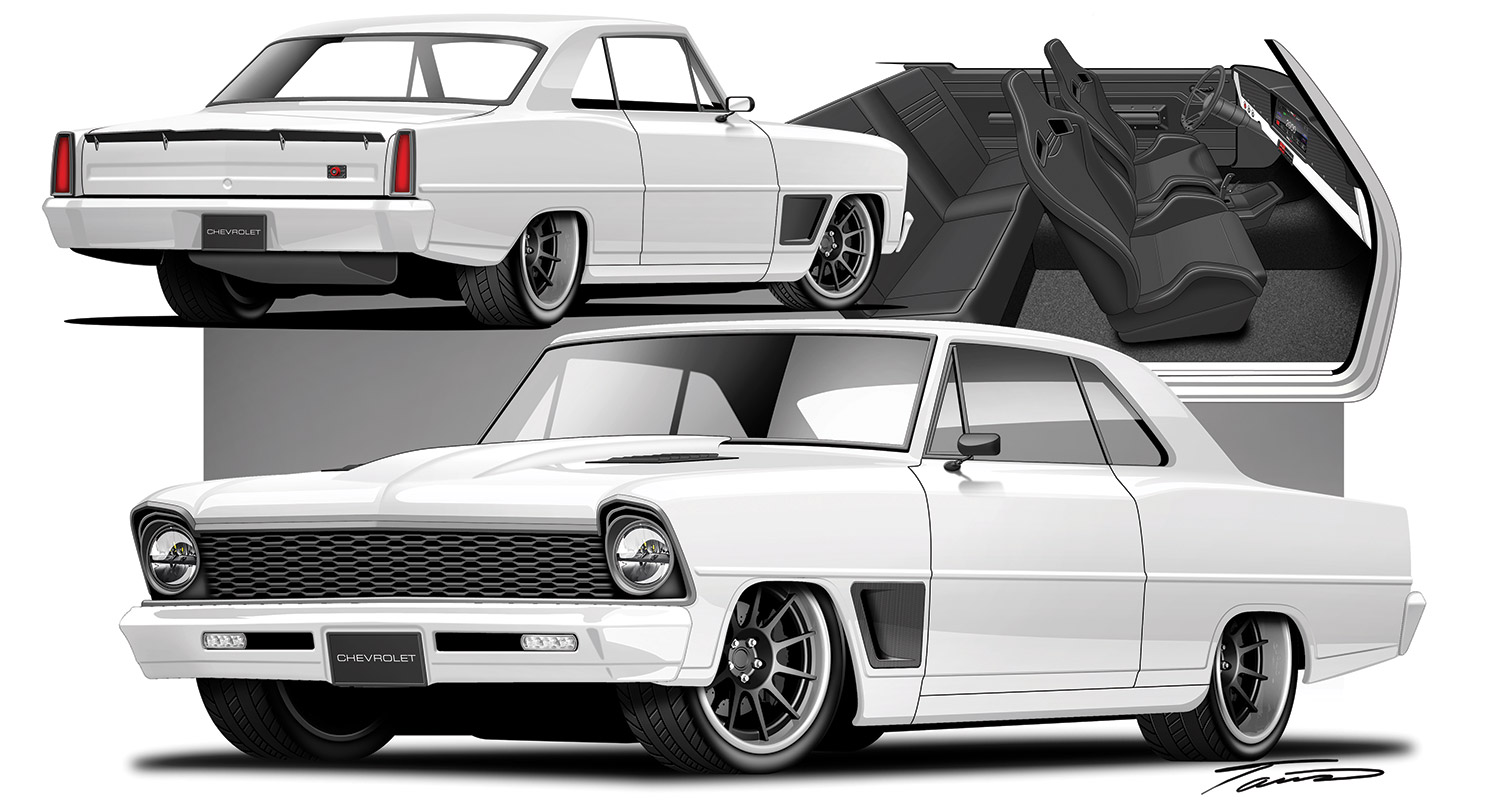

Owner: Joe Masquelier
 Text & Rendering By Tavis Highlander
Text & Rendering By Tavis Highlanderhen Joe Masquelier contacted me about drawing up his 1966 Nova project, I could tell that he had a solid vision already in his mind of what the car should be. The elements were all there and Joe was kind enough to let me link them together with some interesting design elements.
We started out by designing a custom hex-pattern grille insert and then moved around to the front fenders. A batch of front wheelwell vents were presented and we settled on a clean-looking carbon element that would be a custom layup. Sheetmetal hood vents, SPA Technique mirrors, and a custom rear spoiler round out the exterior.
Inside the cockpit, we designed a simple dash that center-mounts the Holley digital display. Custom-designed door panels with some carbon elements continue the Spartan but interesting look of the interior.
Armed with a clean-cut design that illustrates his end goals, Joe is ready to unleash Schwartz Performance on the actual build!
 Feature
Feature
 Text & Photos by Scotty Lachenauer
Text & Photos by Scotty Lachenauerwning and driving a top-notch Camaro can be downright addictive. Just ask Vinnie Rosato of Union Beach, New Jersey, and he’ll tell you the same thing. You see, Vinnie always had a thing for Camaros—especially the 1969 models. “I’ve always been a car lover, but the 1969 Camaro has been my favorite model by far,” Vinnie says. He’s obviously not alone in his thoughts, as the 1969 has become the most sought-after F-body design of all time.
So, when Vinnie got the urge to design himself a drag car to hit the local dragstrips, there was no question which car would be the basis for his new racer. “I found a suitable 1969 Camaro and turned it into a track terror. I raced it through the ’80s, ’90s, and early ’00s. By 2009 I didn’t have time to race, so I sold what was now my Outlaw 105 racer to my good friend Larry Carpenter in Rockford, Illinois,” Vinnie continues.

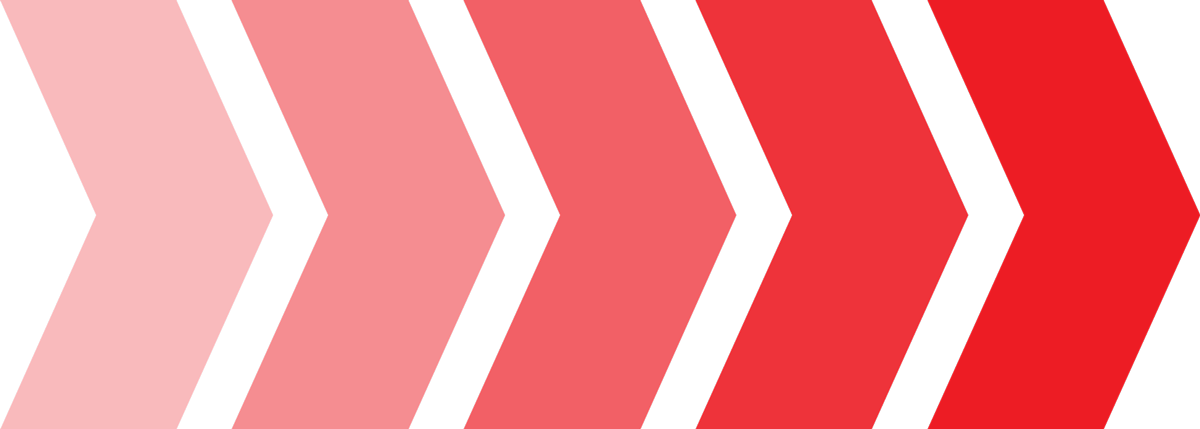 FEATURE OF THE MONTH SPONSORED BY OPTIMA BATTERIES
FEATURE OF THE MONTH SPONSORED BY OPTIMA BATTERIES FEATURE OF THE MONTH SPONSORED BY OPTIMA BATTERIES
FEATURE OF THE MONTH SPONSORED BY OPTIMA BATTERIES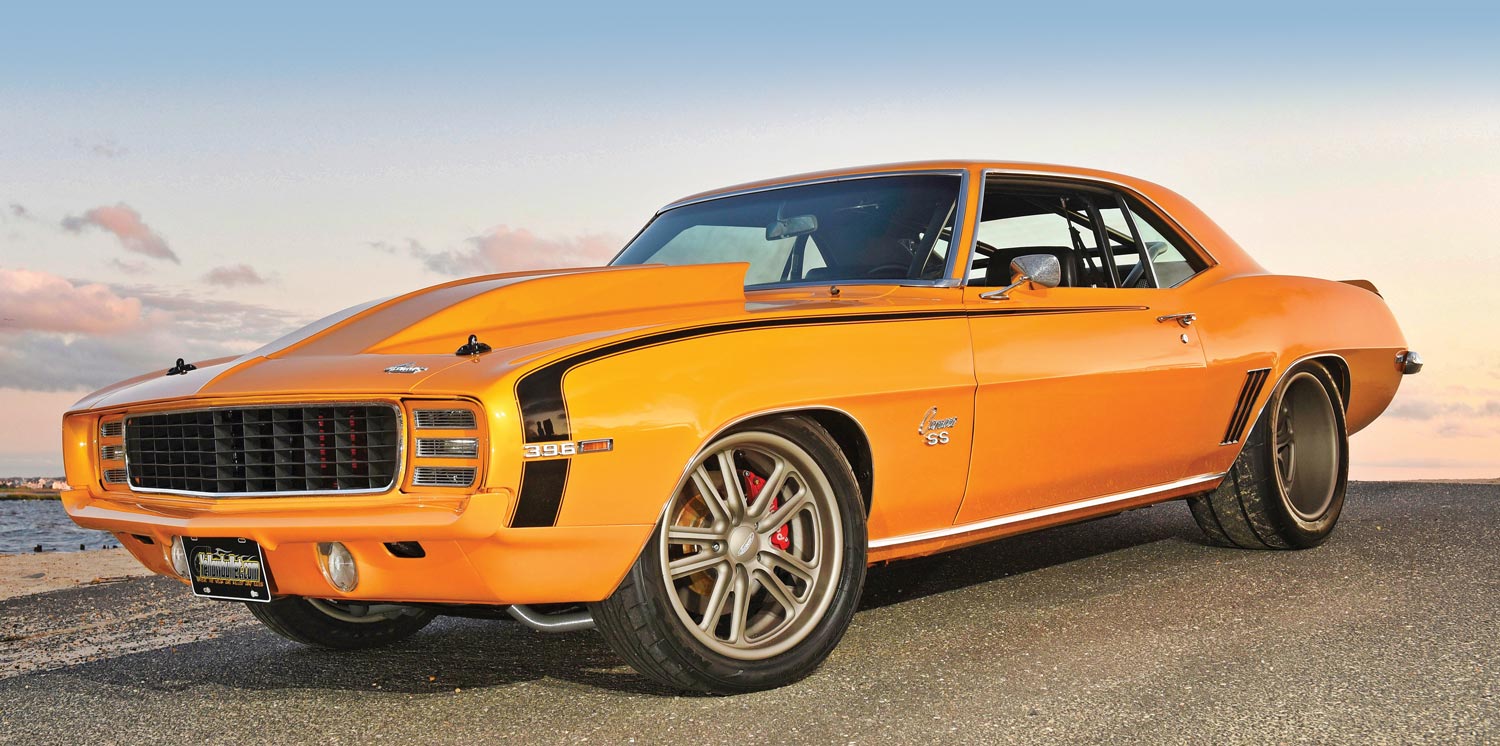
 Tech
Tech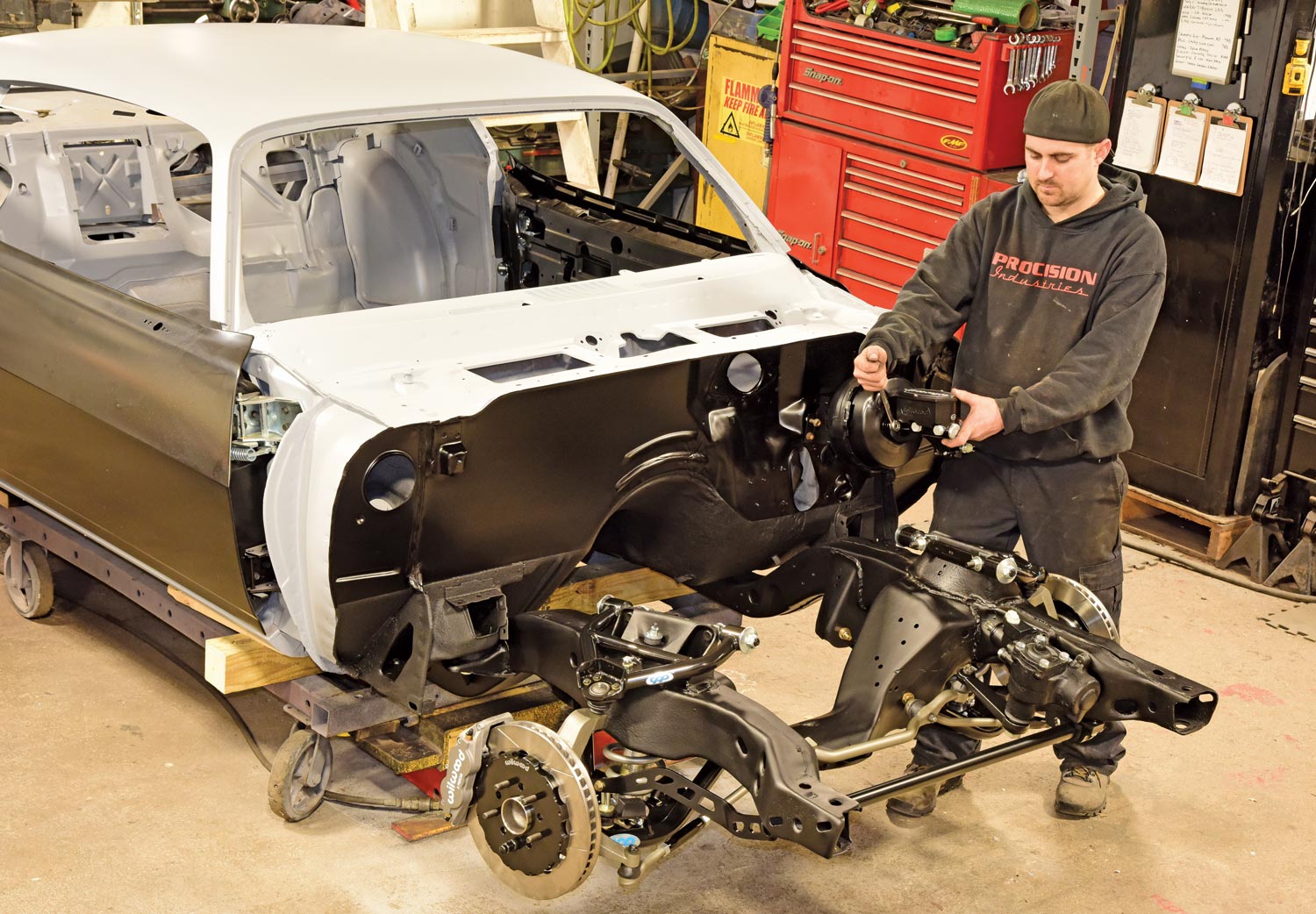
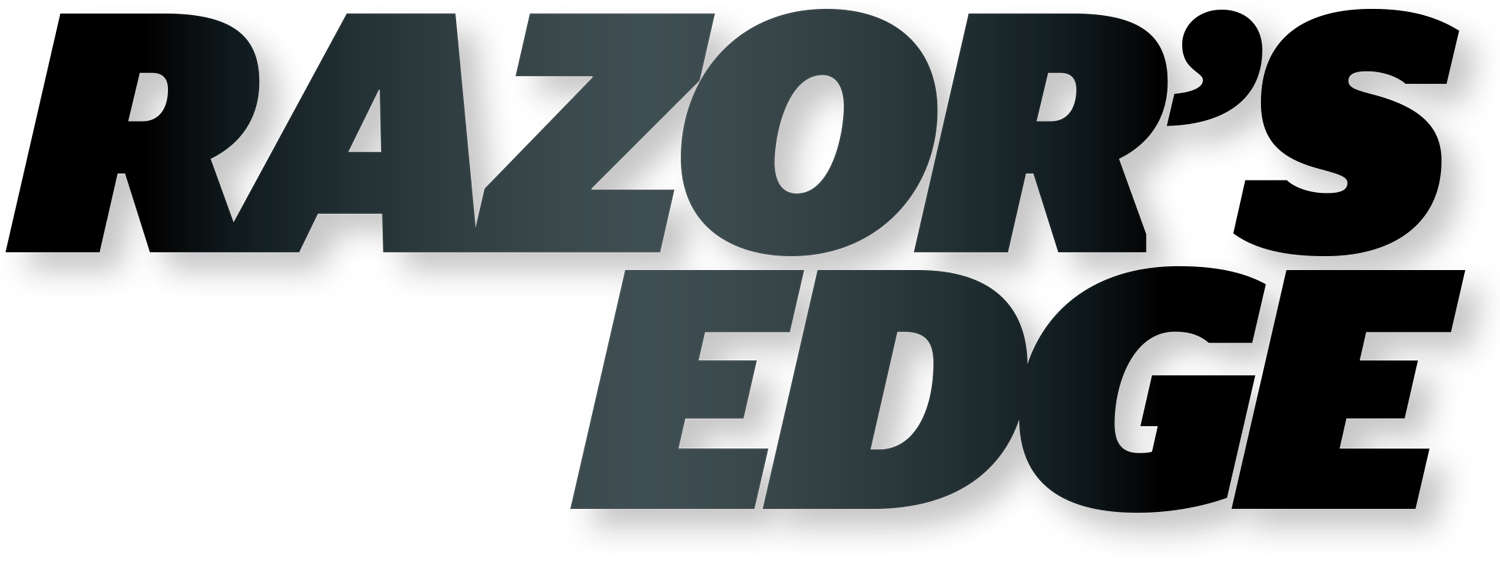
 TEXT & PHOTOS BY Chuck Vranas
TEXT & PHOTOS BY Chuck Vranashen laying out the plans for a fresh build or updating your present ride, it’s always a good idea to try and establish performance goals before getting started. It’s nailing down a budget to work within to be able to score the best technology available. It’s also important to make the determination if you want to have a tame boulevard cruiser, hopped-up Saturday night special, or an aggressive cone-carver. Any way you look at it, if you want to put down the power, you’d better have a rock-solid base to work with, starting with suspension, steering, and braking.
On a recent visit to Procision Industries in Taunton, Massachusetts, we met up with shop owner Pat O’Brien who had recently purchased a 1971 Camaro project. The stripped roller had been blasted clean and coated in epoxy primer to prepare it for the next journey. When talking with O’Brien about the build, his main goals were to create an affordable LS-powered second-gen that could hold its own on the street as well as the autocross while not breaking the bank in the process.
It was a perfect opportunity for All Chevy Performance to follow along on the build, starting with a complete rebuild of the front suspension, brakes, and steering to bring the car to the next level. One call was all it took to Classic Performance Products (CPP) to check out their new Pro-Touring kits featuring cutting-edge performance at an affordable price. They’re available in a number of different stages, showcasing well-defined upgrades for front suspension (Stage I and II) to full kits for front and rear suspension (Stage III and IV) depending on your particular needs. In this article we’re focusing on the Stage II kit, which utilizes the factory subframe to bring newfound handling to the original bones.
 Feature
Feature Text and Photos by Scotty Lachenauer
Text and Photos by Scotty Lachenauer
s a car-crazed kid growing up in Northern New Jersey, young Mike Lagomarsino developed a perpetual passion for GM’s iconic 1957 Chevy. “From the beginning 1957s were always my favorite car,” Mike says. “I had models and HO cars everywhere—all of them were 1957s. When I got older, Popular Hot Rodding magazine’s Project X was my favorite feature. I read and studied every article with the intent to one day build an ‘X’ of my own.”
So, at age 15 Mike got his hands on his first 1957—a project car that basically needed everything under the sun just to get it out on the street. Holding him back as well was the fact that he was still a few years short of legal driving age in New Jersey. “That Chevy didn’t last long, as I worked on it for a few months and then decided to pass it on,” Mike says. However, a few years later, at age 19 he got another 1957. This one had a 327 stuffed with 12.5:1 pistons and a tunnel ram with two gas-guzzling four-barrels up on top. With 4.88 gears out back, it was pretty fast.
 Feature
Feature
 Text and Photos by Scotty Lachenauer
Text and Photos by Scotty Lachenauers a car-crazed kid growing up in Northern New Jersey, young Mike Lagomarsino developed a perpetual passion for GM’s iconic 1957 Chevy. “From the beginning 1957s were always my favorite car,” Mike says. “I had models and HO cars everywhere—all of them were 1957s. When I got older, Popular Hot Rodding magazine’s Project X was my favorite feature. I read and studied every article with the intent to one day build an ‘X’ of my own.”
So, at age 15 Mike got his hands on his first 1957—a project car that basically needed everything under the sun just to get it out on the street. Holding him back as well was the fact that he was still a few years short of legal driving age in New Jersey. “That Chevy didn’t last long, as I worked on it for a few months and then decided to pass it on,” Mike says. However, a few years later, at age 19 he got another 1957. This one had a 327 stuffed with 12.5:1 pistons and a tunnel ram with two gas-guzzling four-barrels up on top. With 4.88 gears out back, it was pretty fast.
 Tech
TechGrand
Grand
 Text & Photos By Jeff Huneycutt
Text & Photos By Jeff Huneycutte’ve all seen the stories about engine builders producing other-worldly amounts of power on so-called “street” engines. And yes, modern engine management systems, turbos, and superchargers all make that easier than ever.
But too often when you read the fine print you realize that the builder may call it a street engine, but nobody in their right mind would really want to live with it in everyday life. Compression so high you can burn only race gas, aggressive ignition timing curves that keep you constantly on the edge of detonation, and engine rebuild intervals that come up faster than tax day when you aren’t ready. Still technically streetable but hardly any fun in the real world.
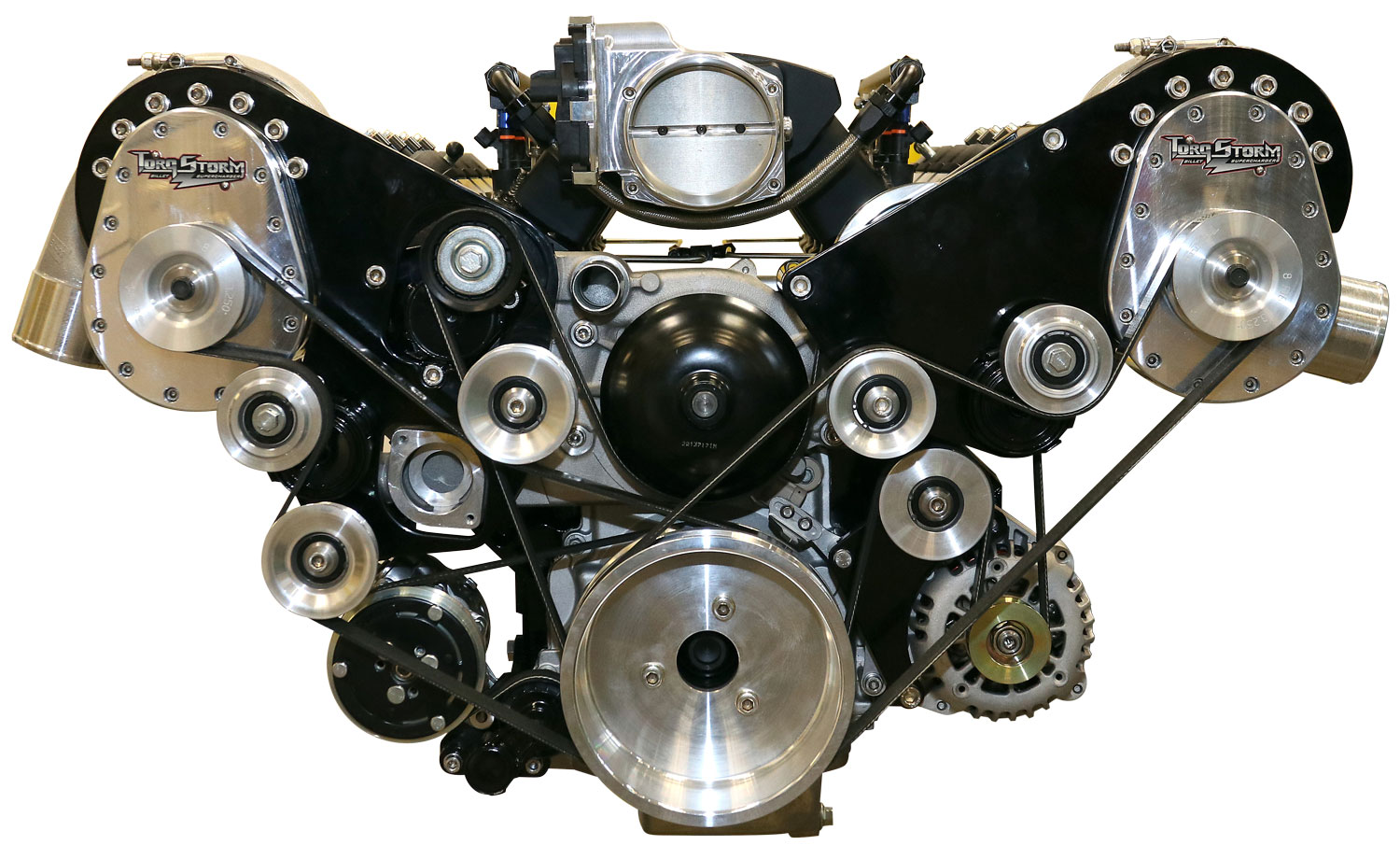
That’s what Prestige Motorsports aims to fix with this supercharged LS build, which has supplied a steady stream of pressurized air thanks to not one but two TorqStorm superchargers. This will be going into a 1969 Camaro and the car’s owner not only demands a dependable rig that he can drive every day, he also wants world-beating power. As a bonus, we think he also got an engine that looks absolutely incredible.
This story is more about making the twin TorqStorm kit work and testing it on the dyno, but so you can have the complete background we need to go over the build a bit. This is a 427ci LS thanks to a 4.125-inch bore and 4.00-inch stroke.
 Feature
Feature
 Photo By Jason Matthew
Photo By Jason Matthew
ith the early ’70s came a good number of appealing and capable new cars from the auto industry, yet there was a slew of models that failed to achieve high rankings as well. Cars such as the 1971 Ford Pinto, Chevrolet Vega, the 1975 AMC Pacer, and the Plymouth Sapporo (we’d never even heard of that one), just to name a few. But nowhere on the ’70s “sucky car” list was the Chevrolet Nova. And for good reason: It had nice styling and the car’s engine was known for durability and reliability. Today, the Nova hasn’t achieved muscle car supremacy like the 1969 Camaro, but it does have a substantial following. Finding one in decent condition can still be had for a relatively reasonable price, but the popularity of these cars continues to grow and so does their market value. With that said, the aftermarket has responded positively by offering a wide variety of restoration parts as well as numerous performance enhancers.
 Feature
Feature
 Photo By Jason Matthew
Photo By Jason Matthew
ith the early ’70s came a good number of appealing and capable new cars from the auto industry, yet there was a slew of models that failed to achieve high rankings as well. Cars such as the 1971 Ford Pinto, Chevrolet Vega, the 1975 AMC Pacer, and the Plymouth Sapporo (we’d never even heard of that one), just to name a few. But nowhere on the ’70s “sucky car” list was the Chevrolet Nova. And for good reason: It had nice styling and the car’s engine was known for durability and reliability. Today, the Nova hasn’t achieved muscle car supremacy like the 1969 Camaro, but it does have a substantial following. Finding one in decent condition can still be had for a relatively reasonable price, but the popularity of these cars continues to grow and so does their market value. With that said, the aftermarket has responded positively by offering a wide variety of restoration parts as well as numerous performance enhancers.
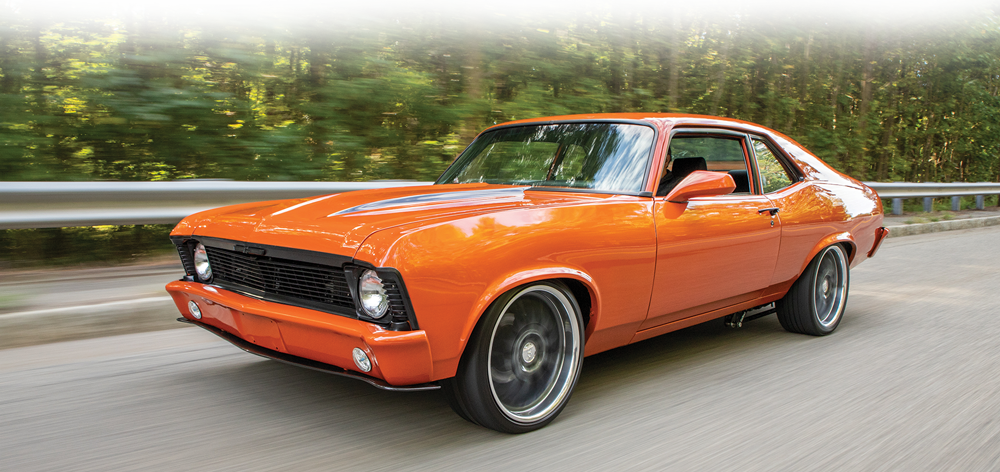
 Tech
Tech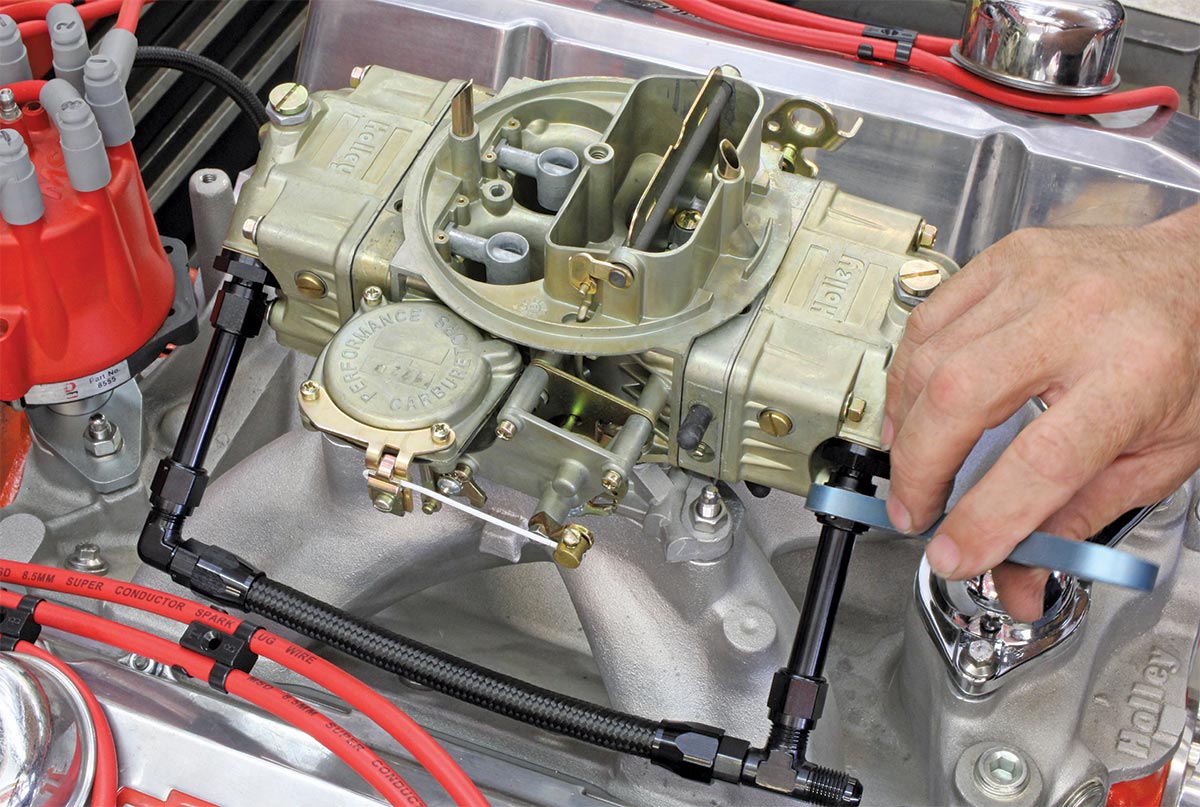
 TEXT & PHOTOS BY Jeff Smith
TEXT & PHOTOS BY Jeff Smithf we had to pick one Holley carburetor to represent the entire history of Holley carburetors, we would choose the 3310. It is the ubiquitous carburetor. Originally created as a 780-cfm vacuum secondary, four-barrel, original-equipment carburetor on many GM big-block engines, this carb has evolved into the go-to standard for street performance.
This carburetor became so in demand that Holley quickly began selling this carburetor first as a 4150 style, which includes a secondary metering block. Over the years, to attract an even broader clientele, the 0-3310 was converted to the 4160 version, meaning the secondary metering block was replaced with a metering plate but still with the same metering characteristics. Along the way, its rating slipped slightly to 750 cfm. There were a few other changes, but the demand continued.
Today, we’re looking at a current version 0-3310-13, which Holley calls the 0-3310-C or the classic version in the traditional gold dichromate finish. Buy one off the shelf and it comes as a dual inlet carb with a mechanical choke, two-hole idle circuit, straight-leg boosters, and no metering block. Or maybe you have one that’s been on your small-block for years and it’s time for a mild upgrade. We have just the plan.
 Feature
Feature
 TEXT & PHOTOS BY Chuck Vranas
TEXT & PHOTOS BY Chuck Vranast’s easy to see that the Chevrolet Corvette is America’s most beloved sports car, taking owners on an amazing performance-driven journey with each defining era—from the C1 all the way to the cutting-edge C8. What’s even better is the ability to inject more edginess into the model of your choice to push it to the limits on the street, dragstrip, and road course. For Rick Smith, of Quincy, Massachusetts, building a hard-edge C3 Corvette that could carve cones at the autocross with a perfect combination of horsepower and grip led to many late nights in his workshop till it was time to hit the track. Not every build is planned, however, and this one has a unique story.
 Tech
Tech
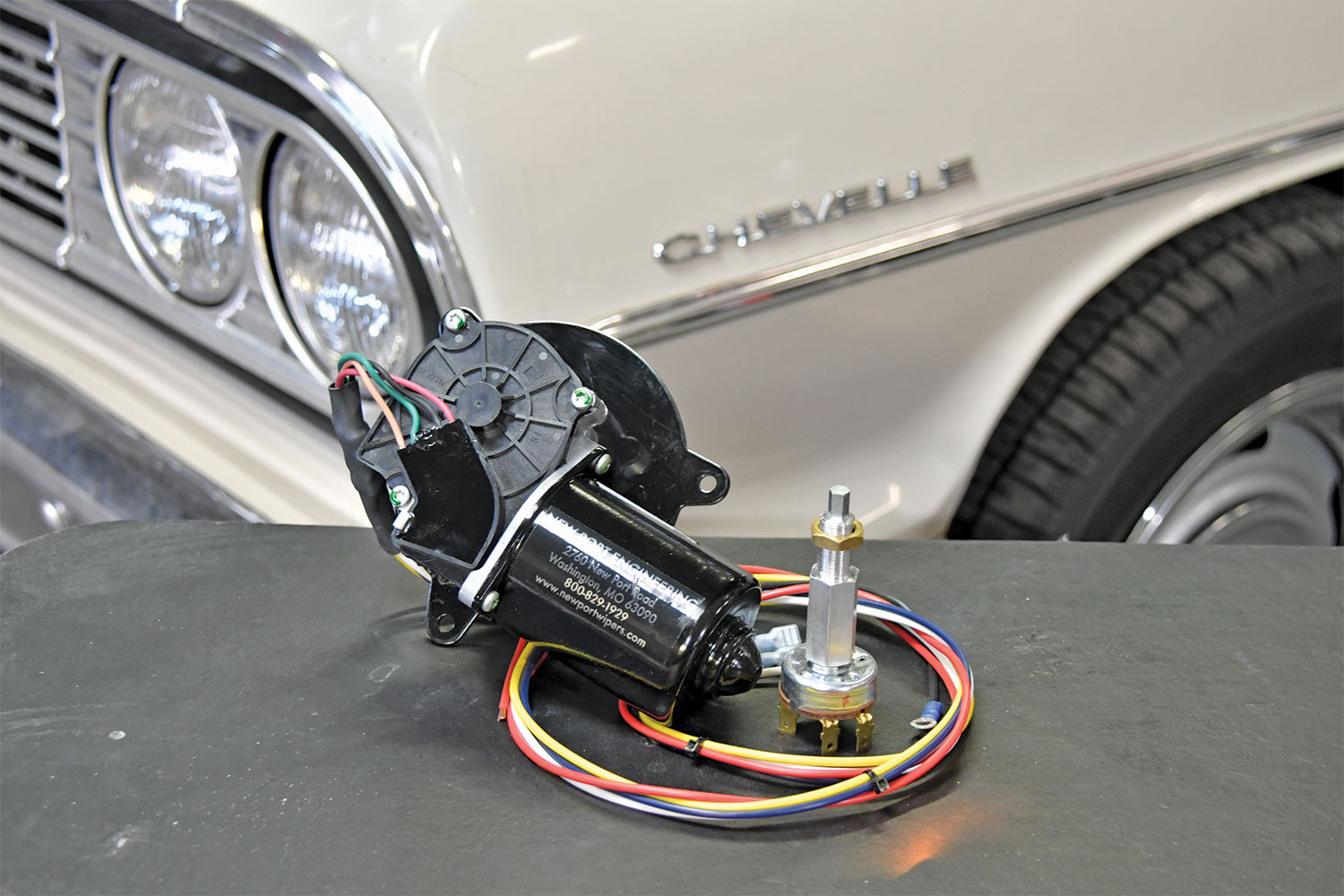
 Text & Photos By Todd Ryden
Text & Photos By Todd Rydenhen a magazine title has the word “performance” in it, you expect the pages to be full of engine tech, braking info, suspension upgrades, and other performance-based stories. Overall driveability improvements that increase the joy you get from driving your Chevy is what we’re all about, which is exactly why we felt it was important to show you how to make your driving experience safer by improving the performance of your windshield wipers.
That’s right, windshield wipers! We understand that windshield wipers are not likely on your top 10 list when it comes to performance, but when you roll through a rain storm, it’s amazing how high on the list a reliable, smooth-operating wiper system becomes. Inconsistent, twitchy, old wiper motors are just not safe on the road. Thanks to New Port Engineering, upgrading to a smooth-swinging wiper system is an easy task with very effective results.
New Port developed their Clean Wipe motor technology over 30 years ago out of necessity. As hot rod builders, Bob and Linda Galbraith were on the road following national events and just couldn’t find a quality wiper system for their Model As. As innovative hot rodders, they set out to build their own system and soon people were coming by their booth for their new wiper motors. Fast-forward and the family run company now offers motors, wiper arms, and blades for nearly 200 different applications!
 Tech
Tech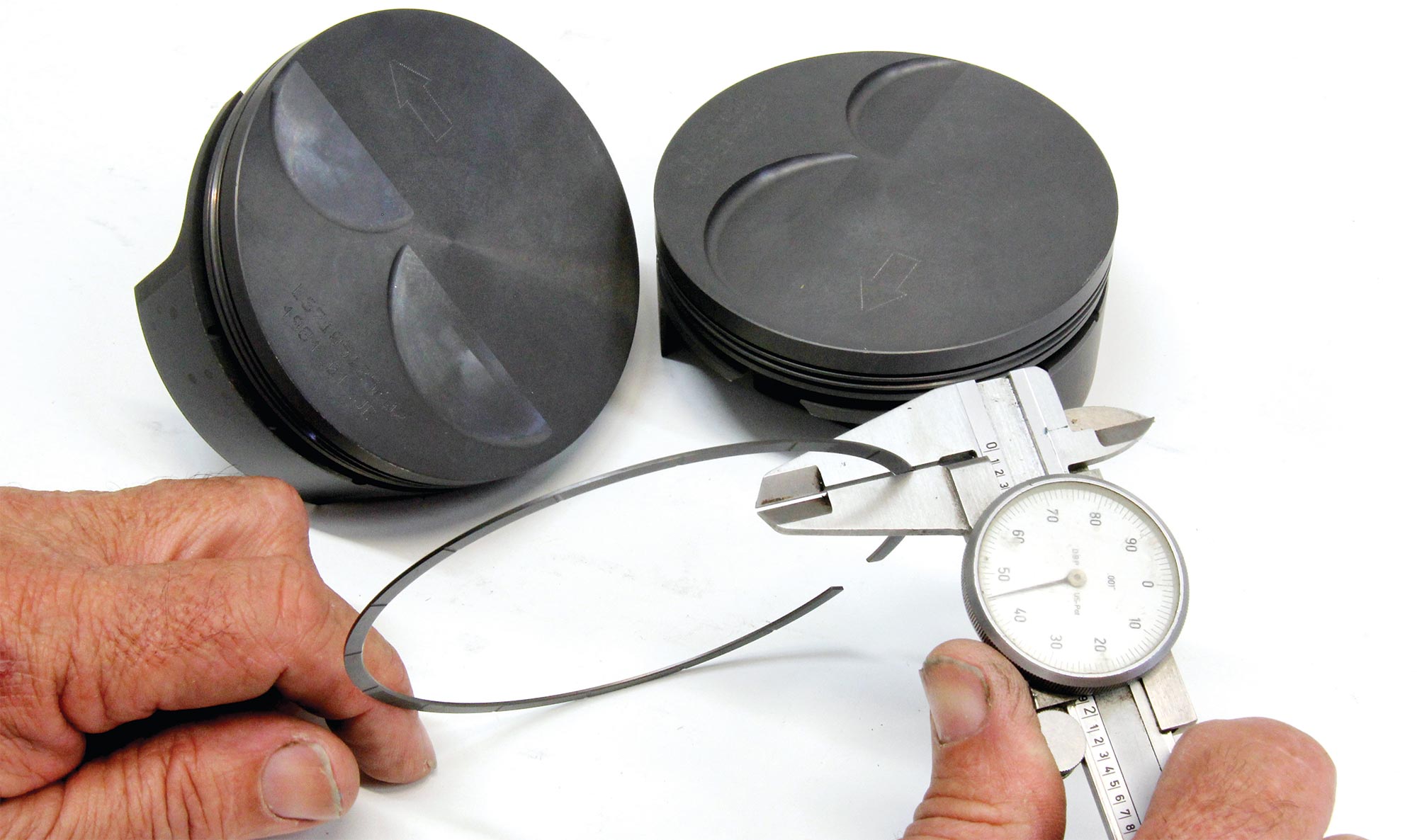
 Text & Photos By Jeff Smith
Text & Photos By Jeff Smith
he old Hollywood adage was “you can’t be too rich or too thin.” While Hollywood prefers to live in the land of fantasy, the last part of that recommendation holds some truth when it comes to making horsepower with internal combustion engines. The guys at Total Seal have been telling us for years that there’s hidden horsepower in most engines if you bother to lighten up the ring package, but there have always been skeptics.
Not long ago, Lake Speed Jr. was performing an engine bearing test at Shaver Racing Engines in Torrance, California, and we offered to follow along. This test had nothing to do with piston rings, but in the middle of the process of switching bearings in the 383ci small-block Chevy that is the shop’s test mule, an interesting incident occurred that led us directly to this story.
We were watching Shaver’s engine technician Keith Chrisco disassemble the connecting rod cap to change the bearings. As he removed the rod cap and pushed the piston down slightly (the engine was upside down on the engine stand with the heads in place) the piston slid down the bore and only stopped when it contacted the head. We’ve performed more than our share of engine builds and we’d never had a piston do that. This immediately prompted a question to Chrisco. “Stop right there. I just watched that piston slide down the bore all by itself. What rings are you using?”
 Feature
Feature PHOTOS BY Charlie Sanden
PHOTOS BY Charlie Sanden
oday, everybody and his uncle owns and uses a smartphone with built-in camera capability. It’s been said that not a second goes by without at least a thousand digital pictures being taken all over the globe. But it wasn’t always like this. Back in the ’60s, photography was still considered an artform; many families didn’t even own a camera, let alone car people. That’s why it’s extra special when vintage car enthusiast pictures surface today.
In this story, let’s examine a handful of color prints taken by Chevy fanatic Charlie Sanden in 1967. Most significant, Charlie was friends with the late, great Smokey Yunick, whose Best Damn Garage In Town was a Daytona Beach, Florida, legend. If you didn’t know, Yunick was one of NASCAR’s pioneers, working closely with Hudson, Pontiac, and Chevrolet in the 1951-1967 time frame. The unifying bond between Charlie and Yunick was the fact both attended the same Chicago-based engineering school, though not at the same time, as Yunick was older than Charlie.
Nonetheless, beginning around 1964, Charlie made regular winter pilgrimages from chilly Massachusetts to balmy Florida to attend the Daytona Speed Weeks where he cheered Yunick and his various teams’ efforts in stock car competition. It was during the 1966 visit (most likely) that Charlie managed to obtain some cast-off exhaust manifolds and a cowl induction system from Chevrolet’s abortive 1963 427 “Mystery Motor” and Z11 campaign. And it’s pictures of those ultrarare GM racing parts that stimulated the creation of this article.
 Bowtie Boneyard
Bowtie Boneyard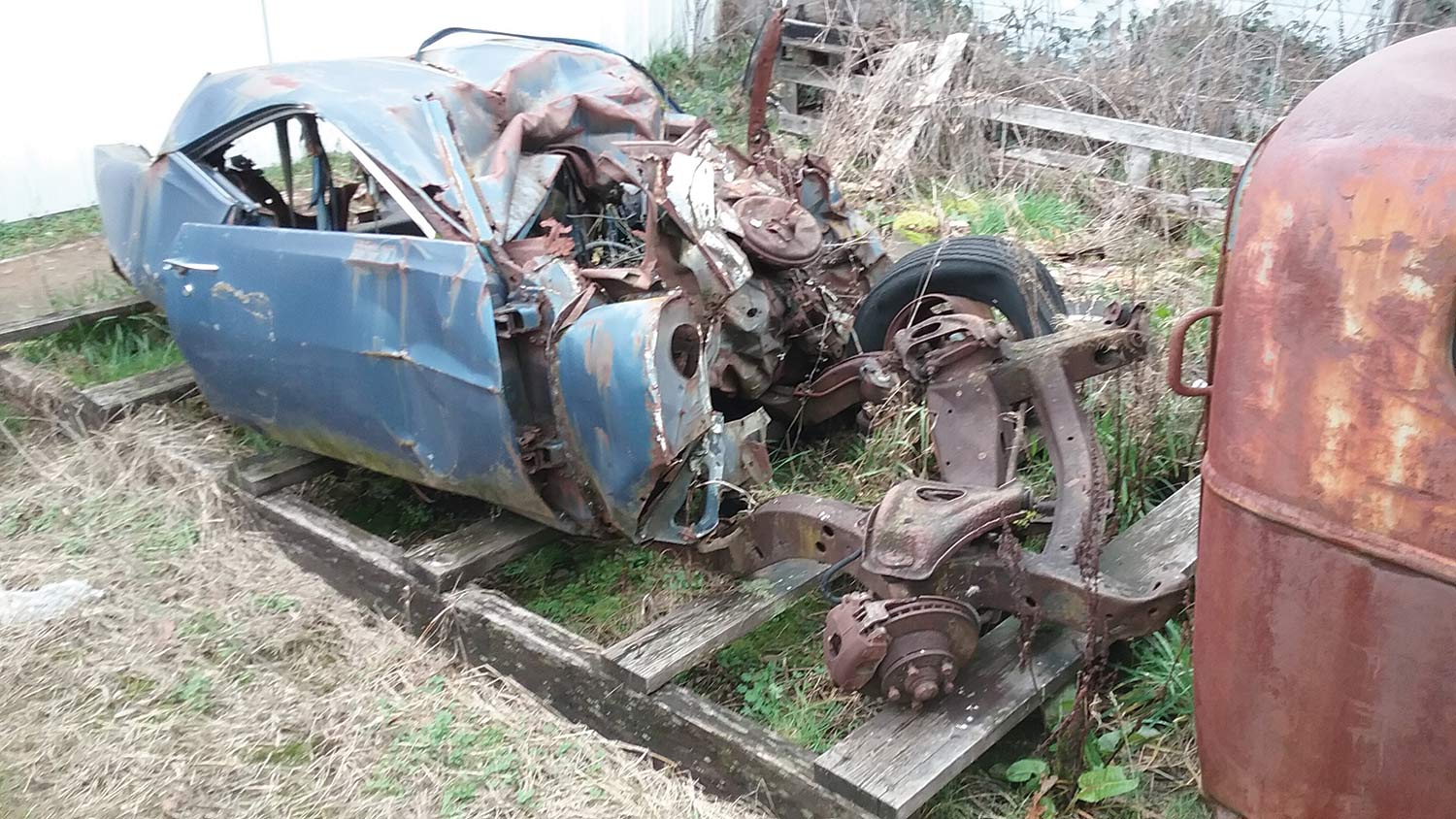
 TEXT & PHOTOS BY Steve Magnante
TEXT & PHOTOS BY Steve Magnanten 1969 Chevrolet built exactly 20,302 Z/28 Camaros. This is the sad fate of one of them. Discovered during a 2018 visit to Vancouver, Washington’s All American Classics auto parts yard (AAC, 800-955-4999), this LeMans Blue SCCA homologation special was just a year old and had under 5,000 miles on the odometer when it struck a concrete bridge abutment at speed.
When it was new in 1969, the muscle car boom was in its sixth year. Millions of “baby boomers” were getting their driver’s licenses and the insurance industry was beginning to see what happens when teenage drivers are given cars with 300 and 400 hp. And even though the Z/28’s 302 was factory-rated at a seemingly mundane 290 hp, the reality was closer to 350 with mild tuning. What’s more, every 1969 Z/28 came equipped with a four-speed manual transmission. As any seasoned stick jockey knows, banging gears and power shifting go with the territory—as do exaggerated fish tails and power slides. By contrast, automatics are more civilized.
By 1971, the insurance industry began to push back. Armed with over a half decade’s worth of accident reports, it was becoming clear that high-powered cars and young drivers resulted in collisions—and financial losses for the insurance giants. Measures were quickly put in place to even the odds. Most painfully, insurance companies added stiff surcharges for muscle cars, and four-speed transmissions were targeted for an extra fee.
Advertiser
- American Autowire65
- American Legend Wheels79
- Art Morrison Enterprises13
- Auto Metal Direct31
- Classic Instruments9
- Classic Performance Products4-5, 89, 92
- Dakota Digital91
- Danchuk USA45
- FiTech EFI85
- Gandrud Chevrolet89
- Golden Star Classic Auto Parts7
- Heidts Suspension Systems79
- Lokar2
- Performance Online51
- Roadster Shop59
- Scott’s Hotrods85
- Speedway Motors67
- Vintage Air6
- Wilwood Engineering11
- Year One89



